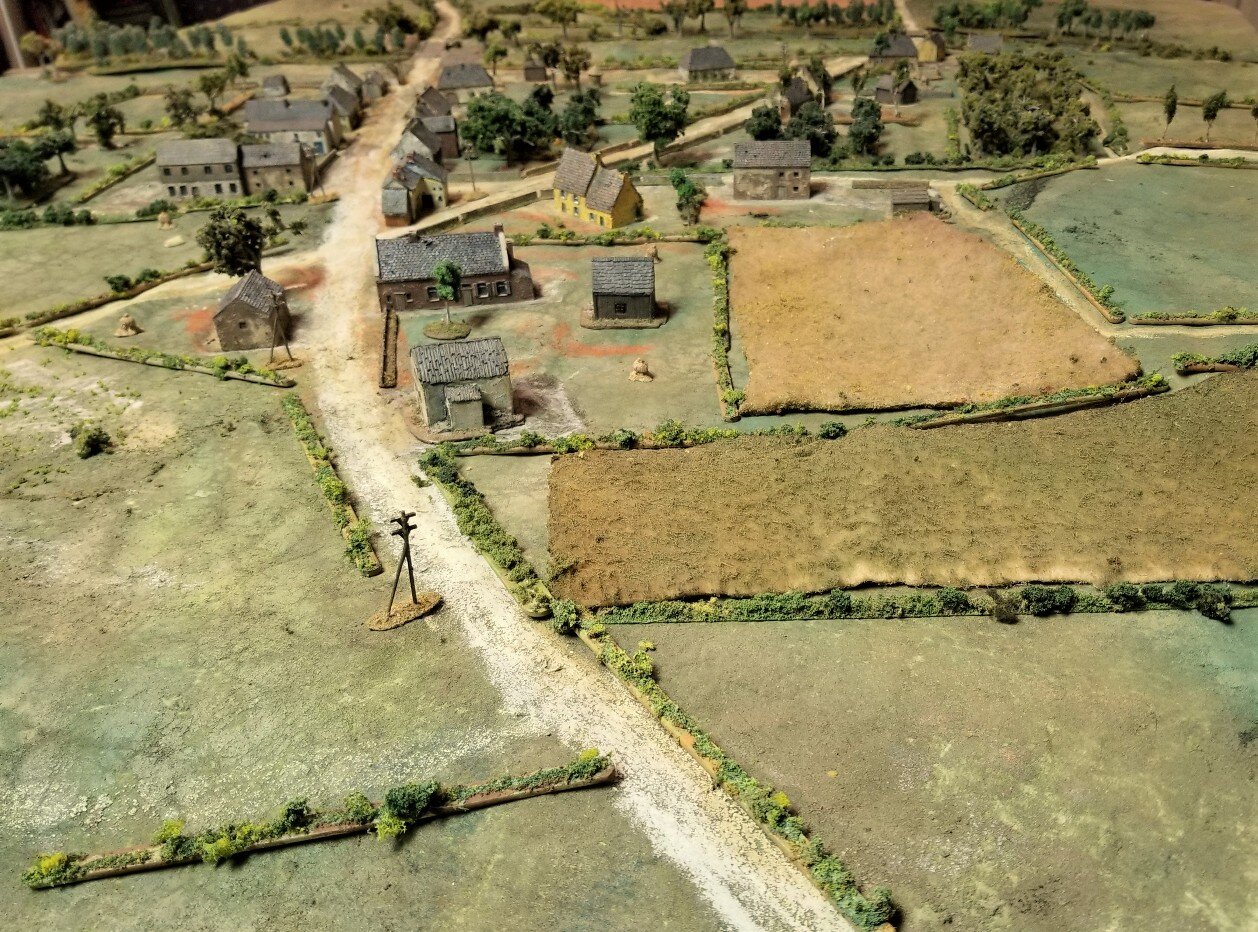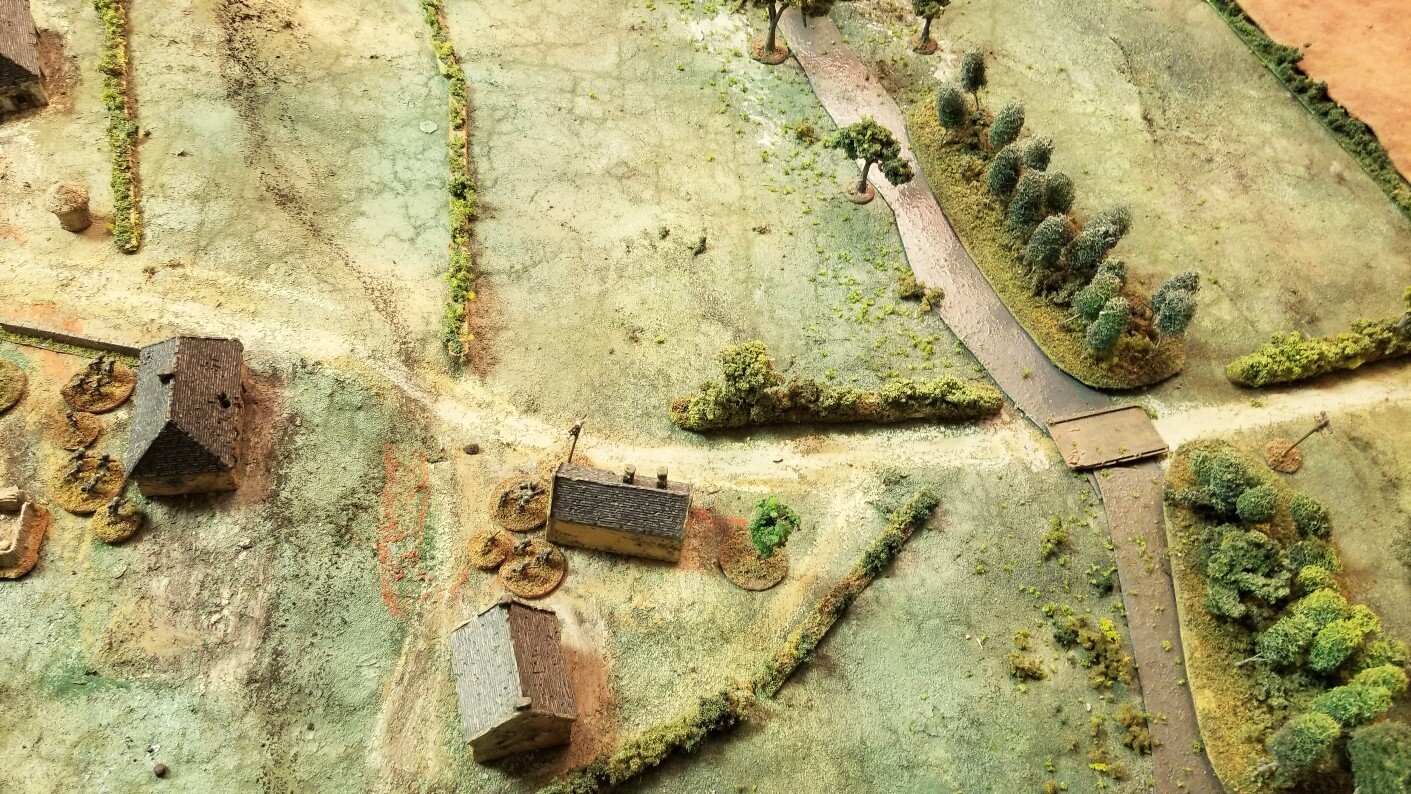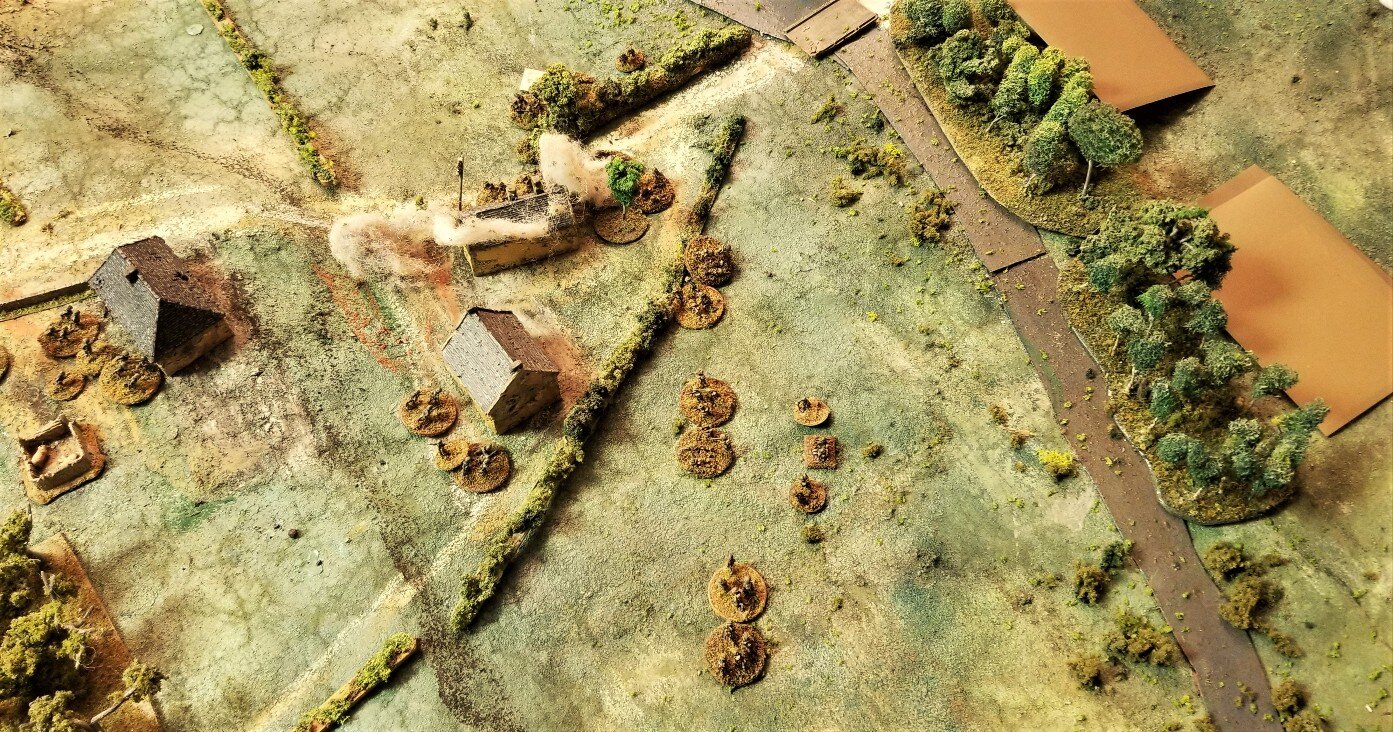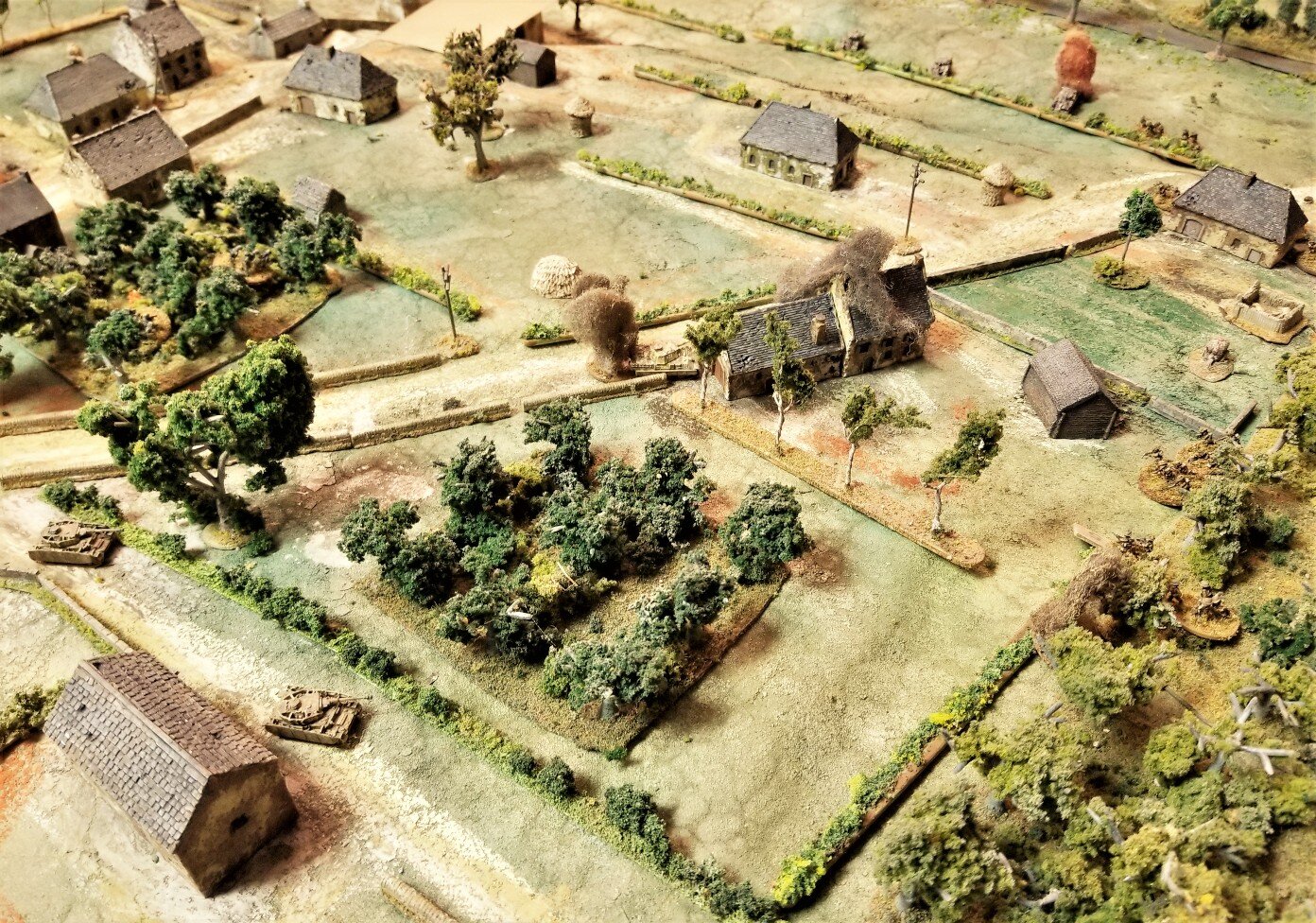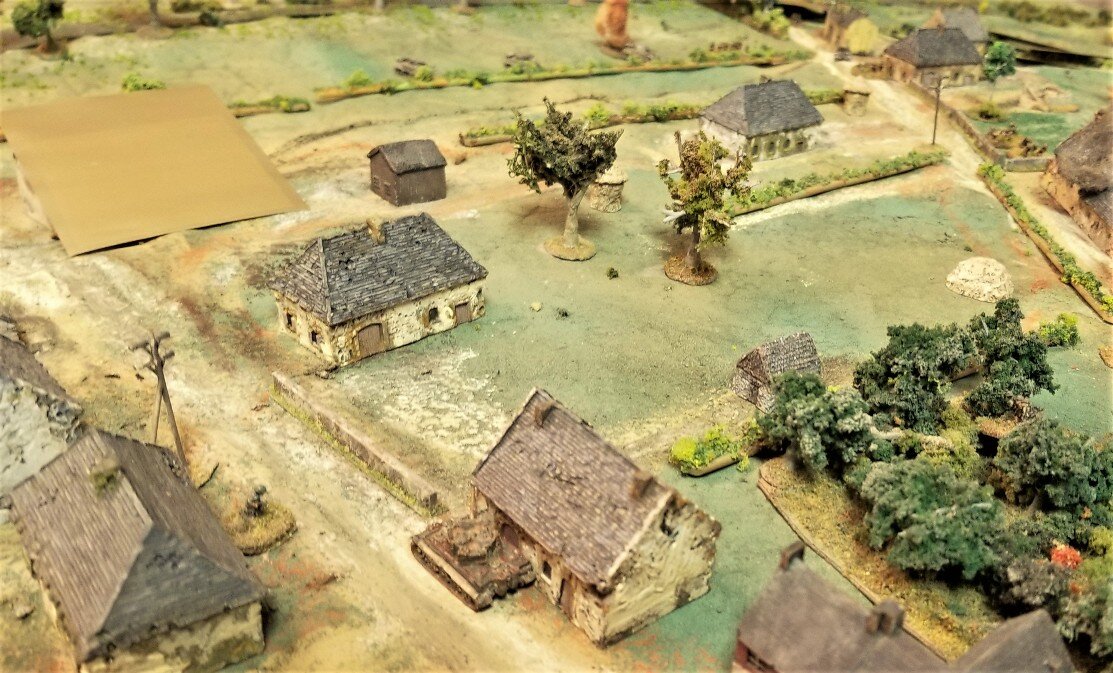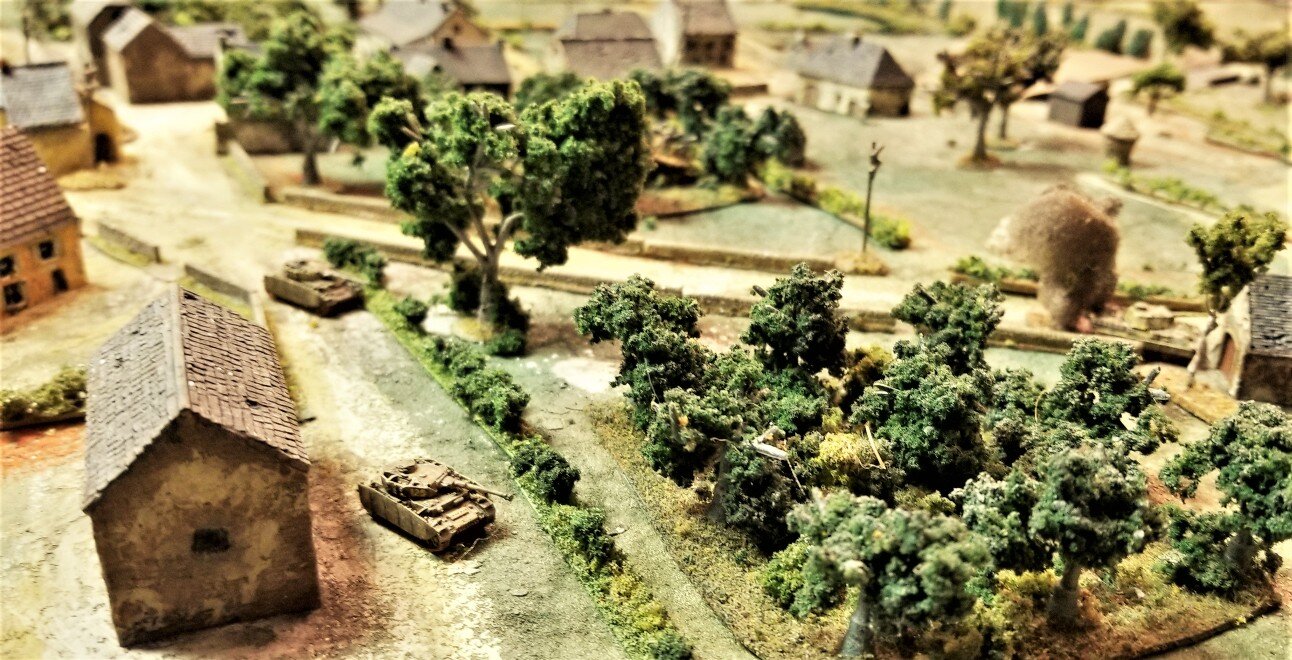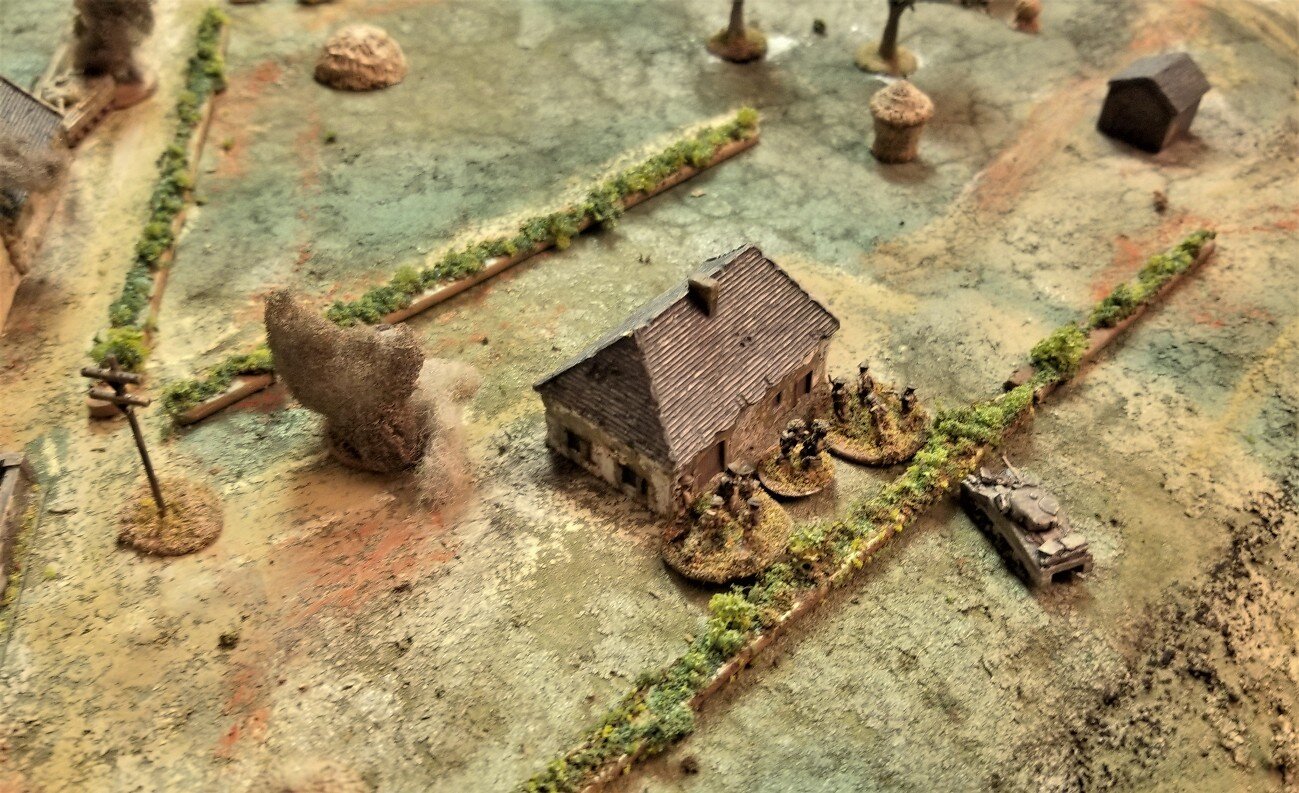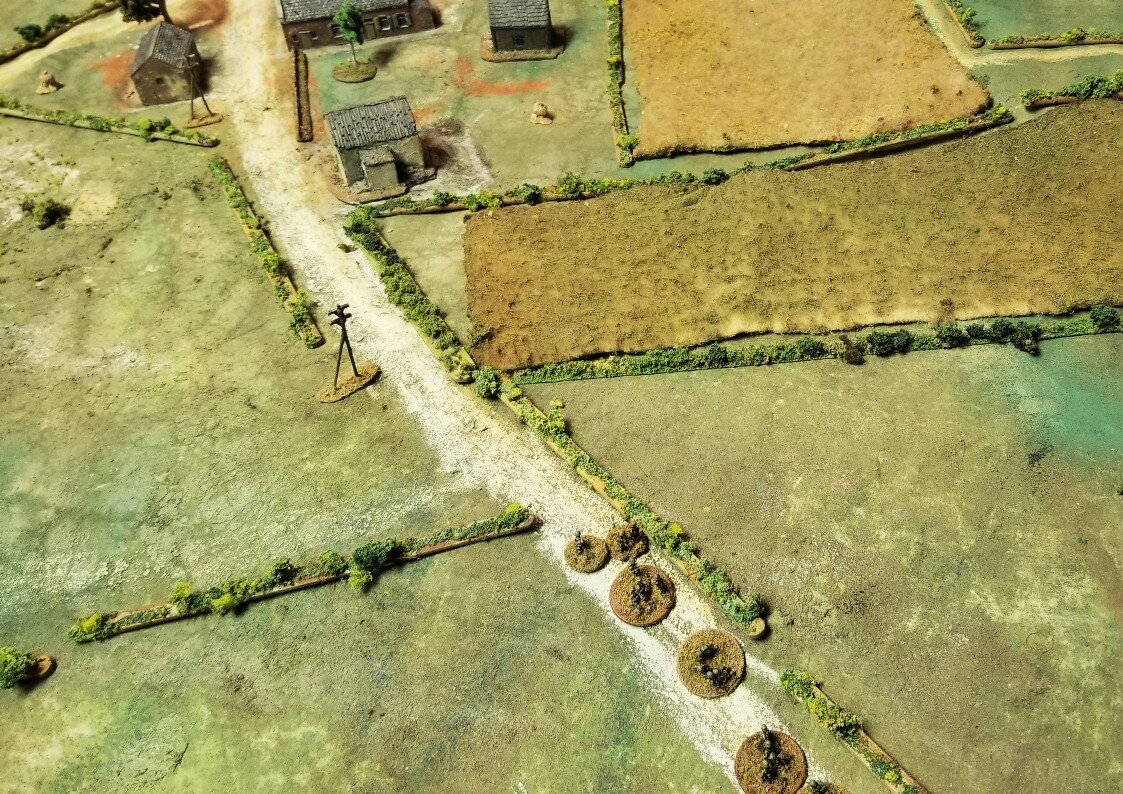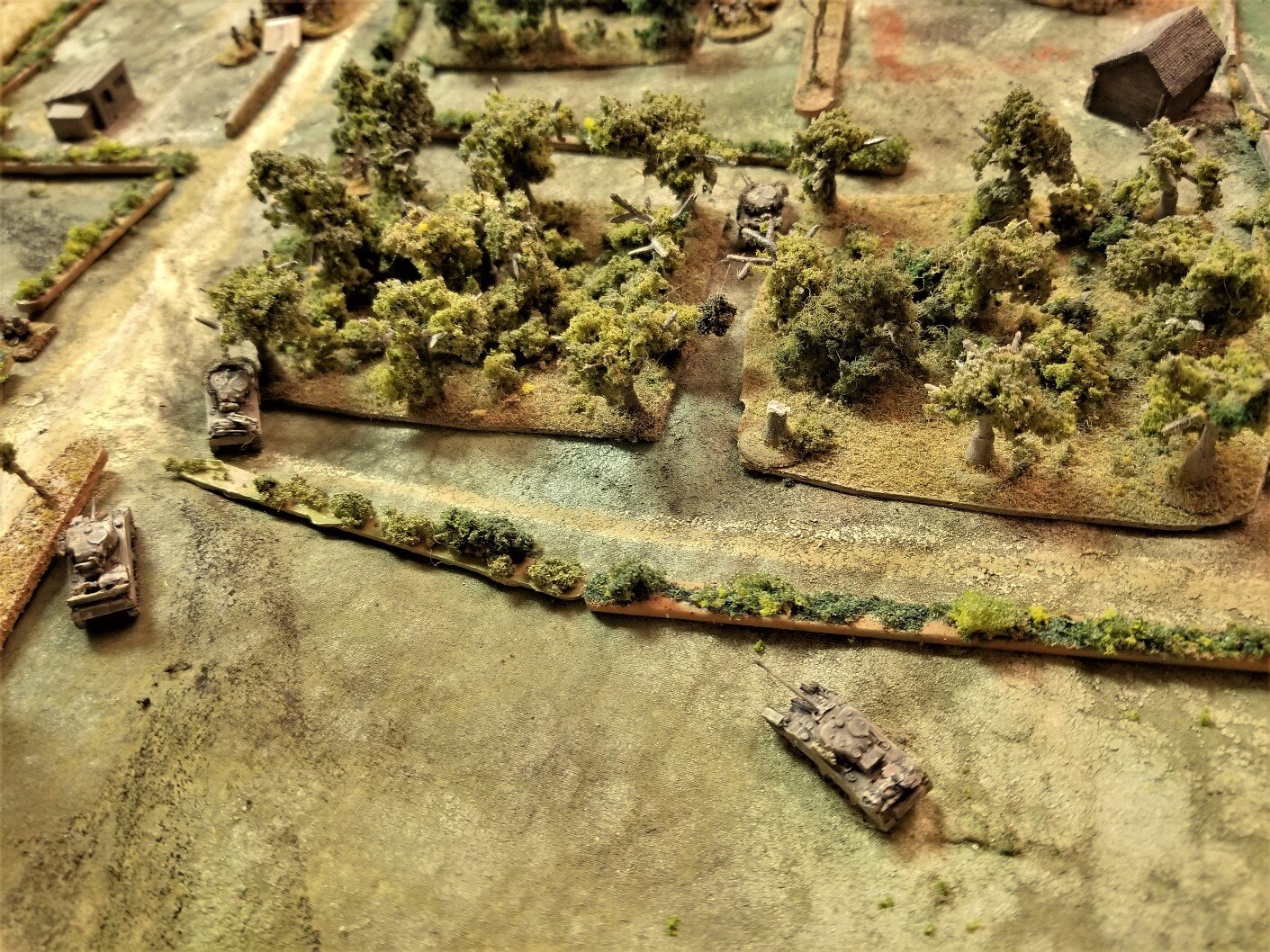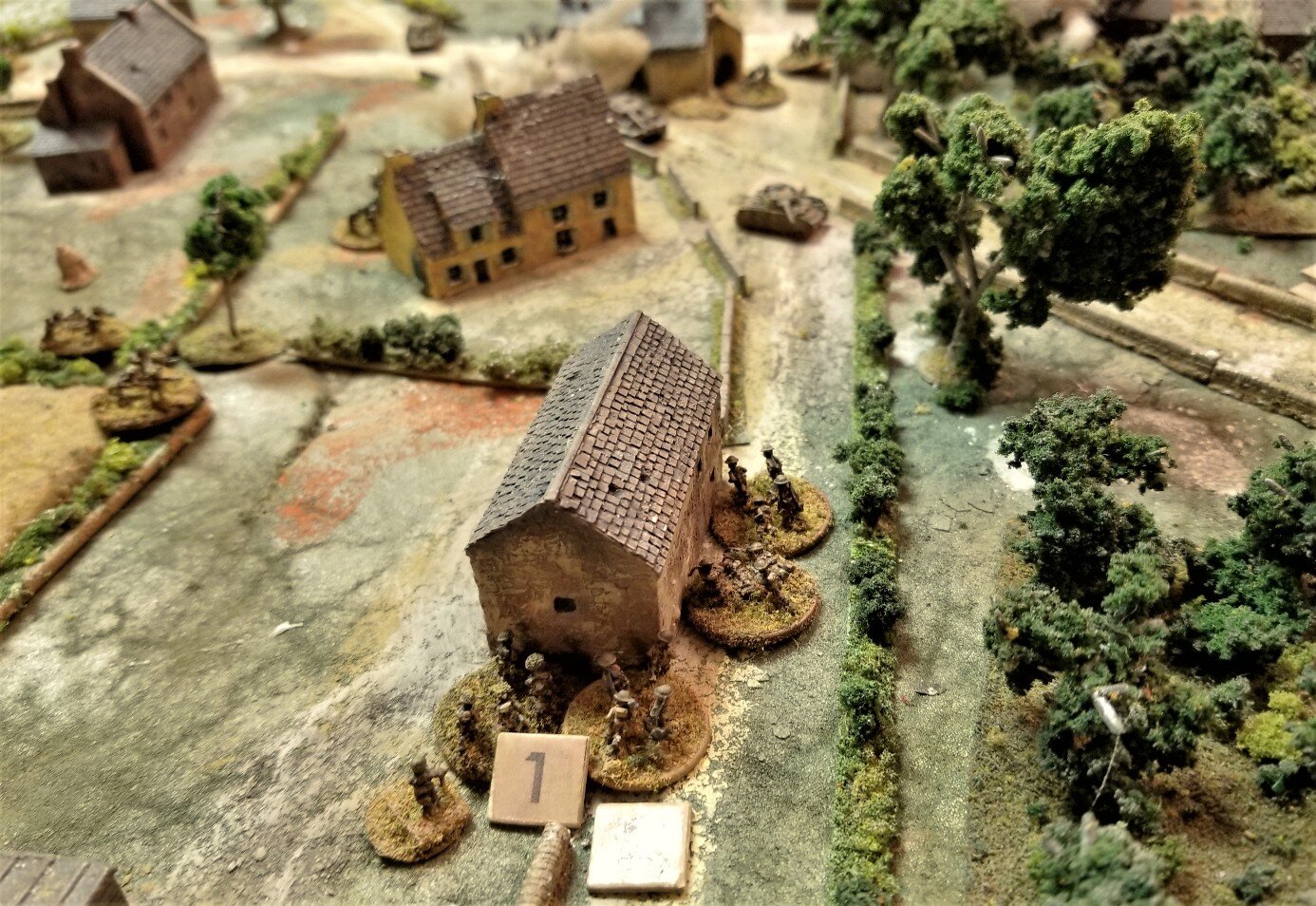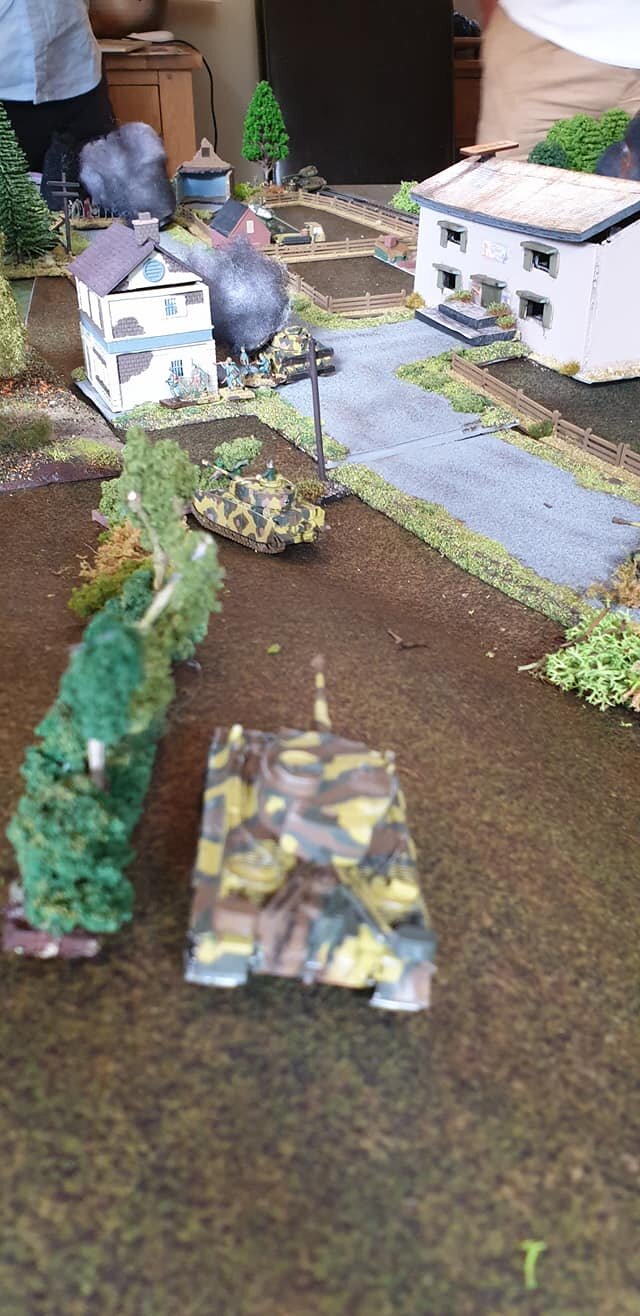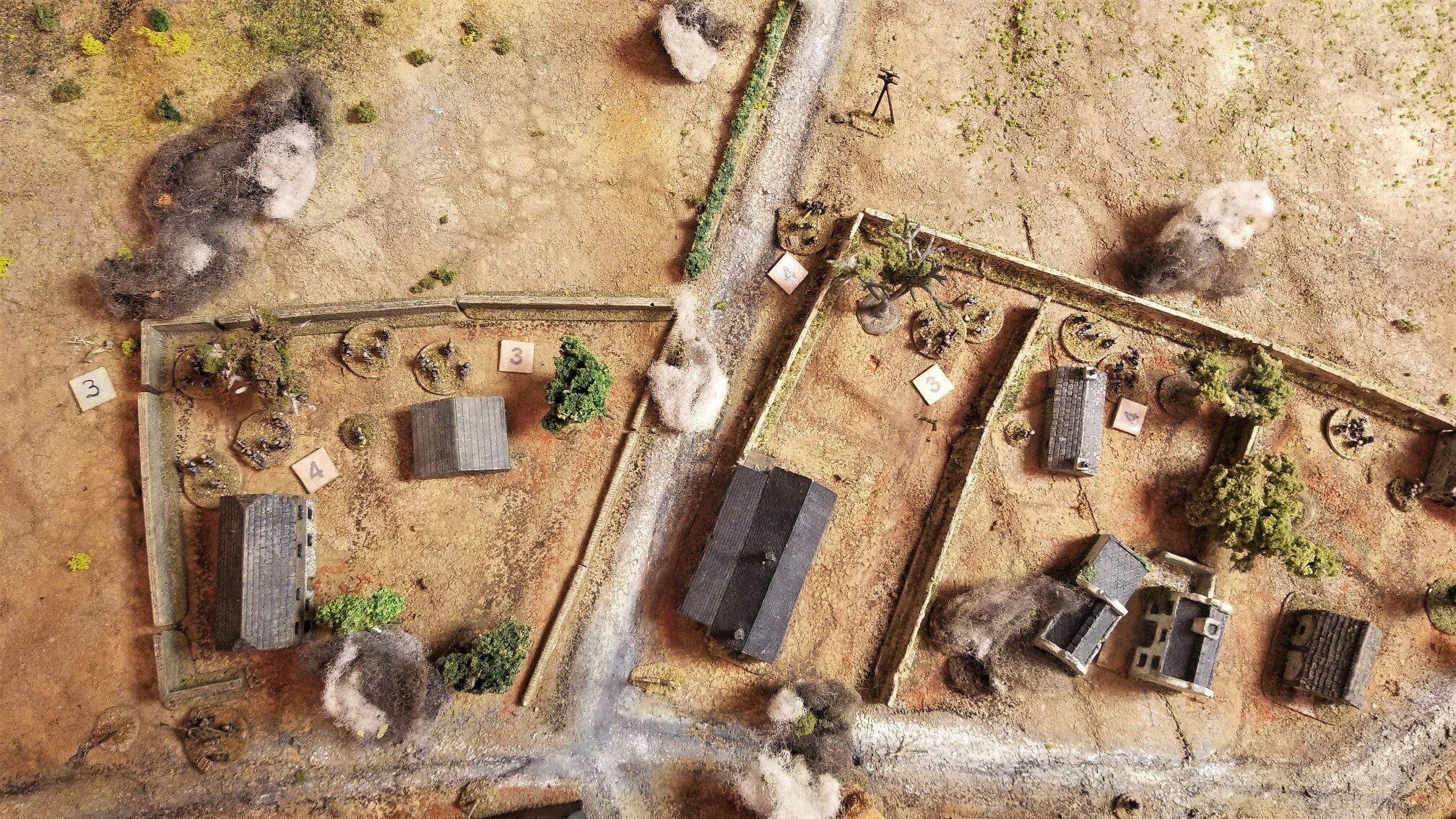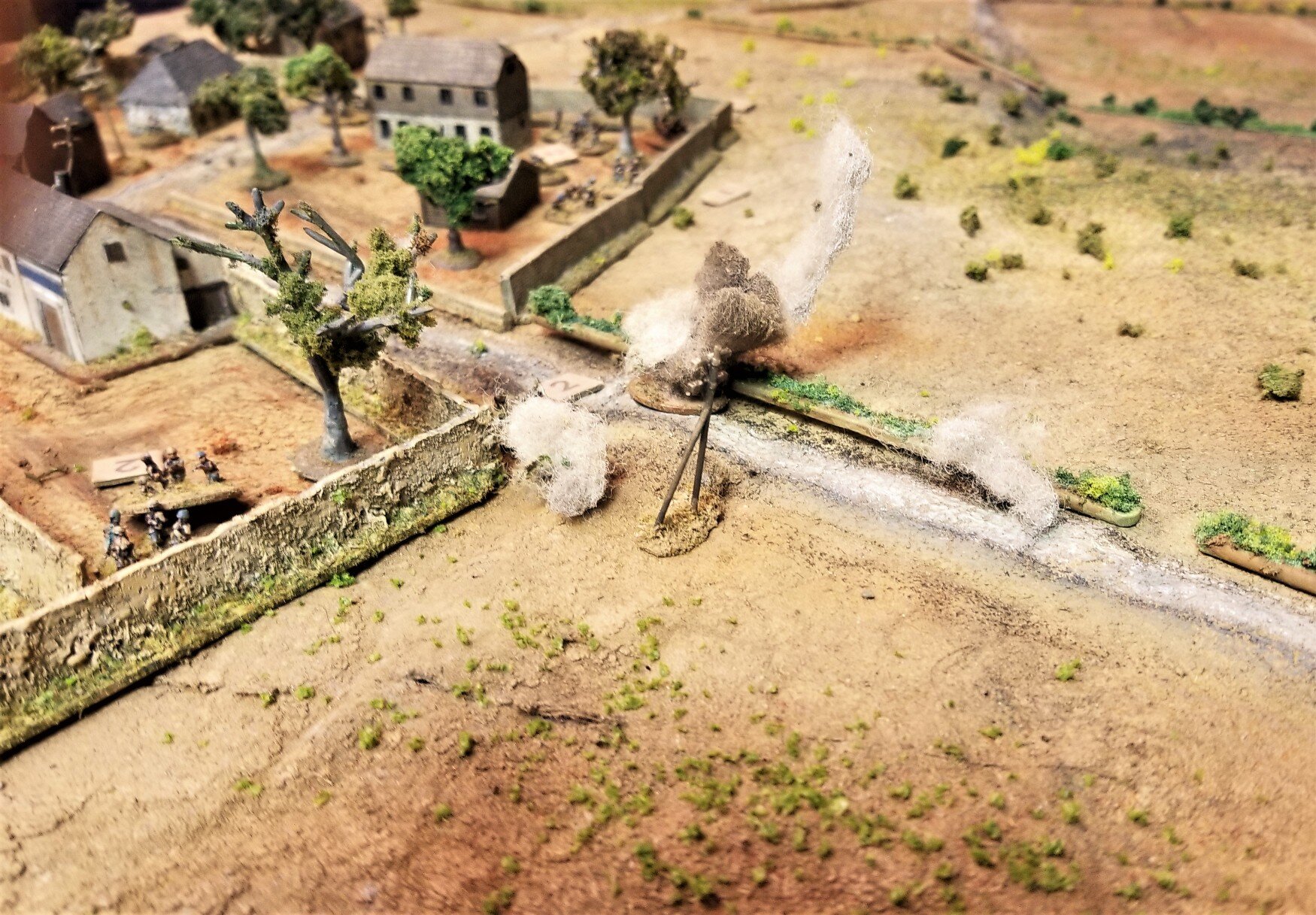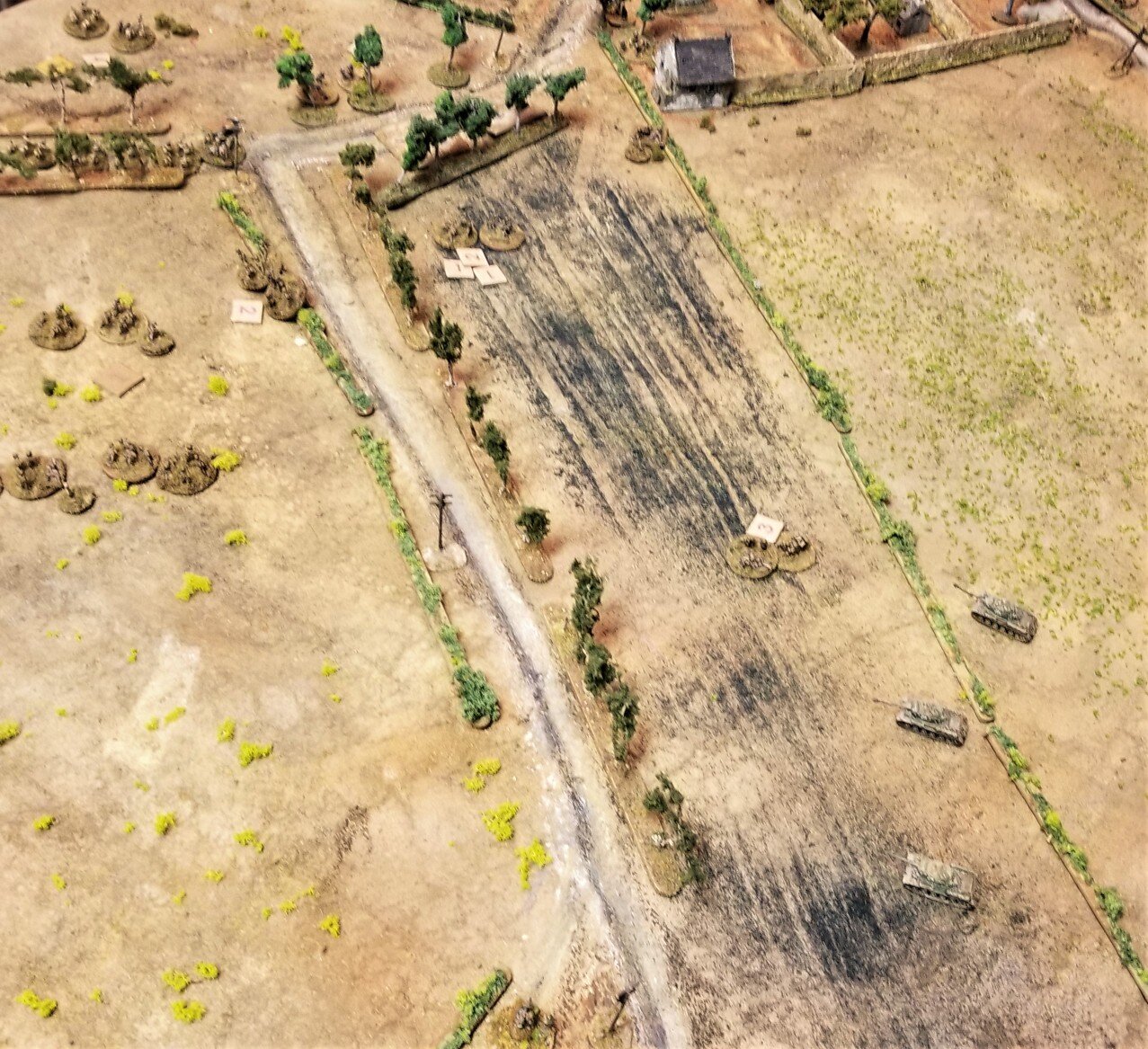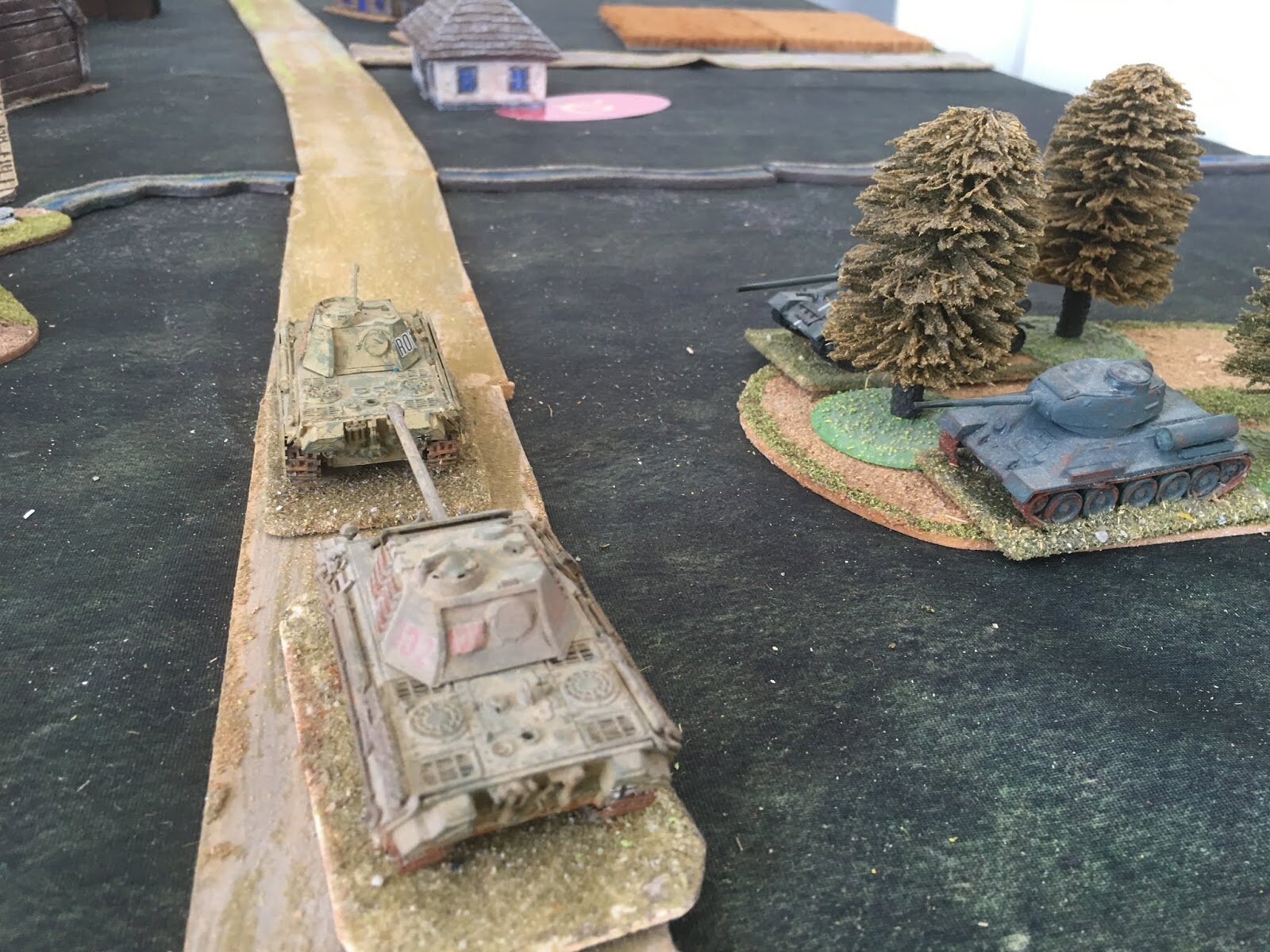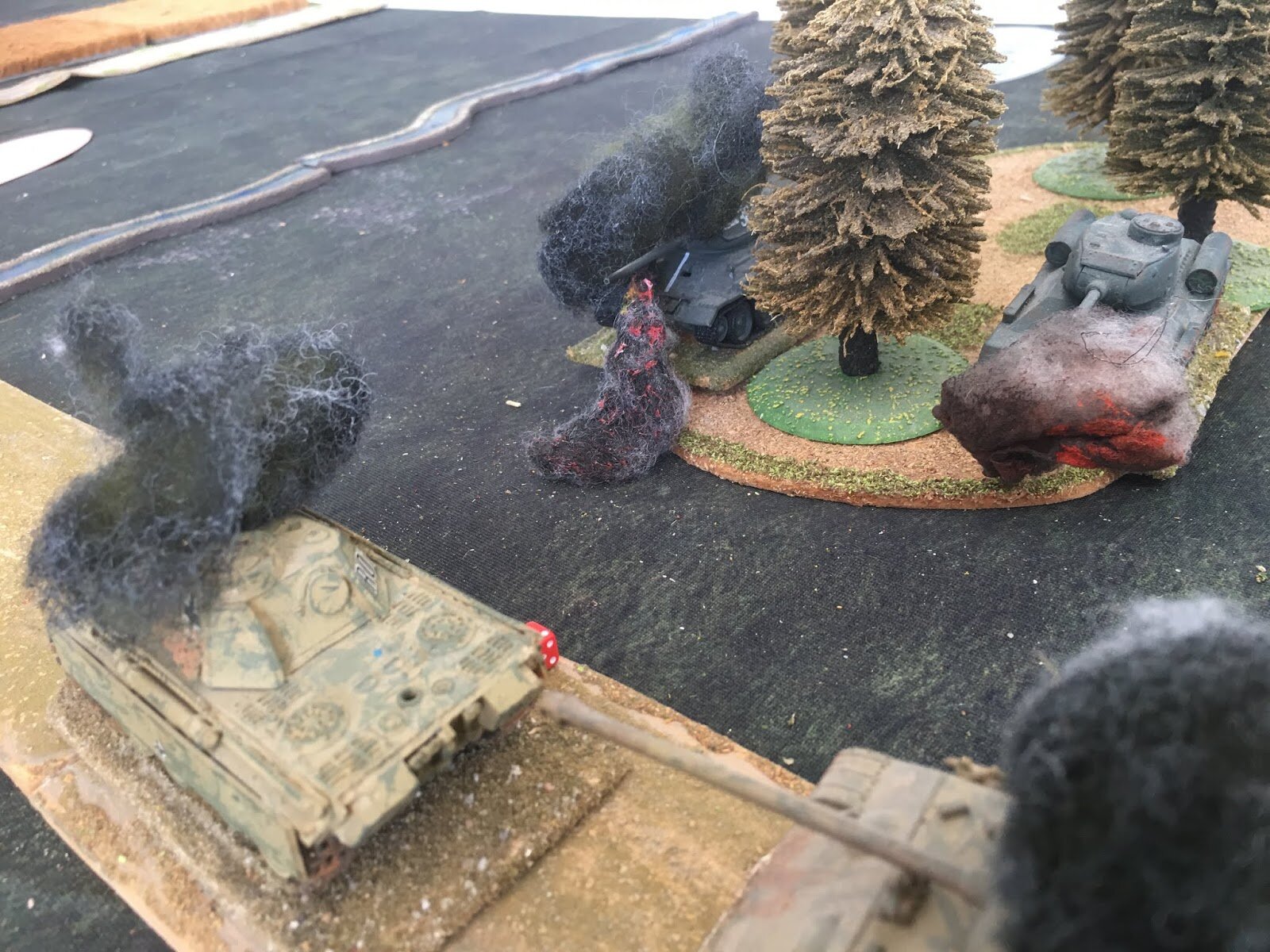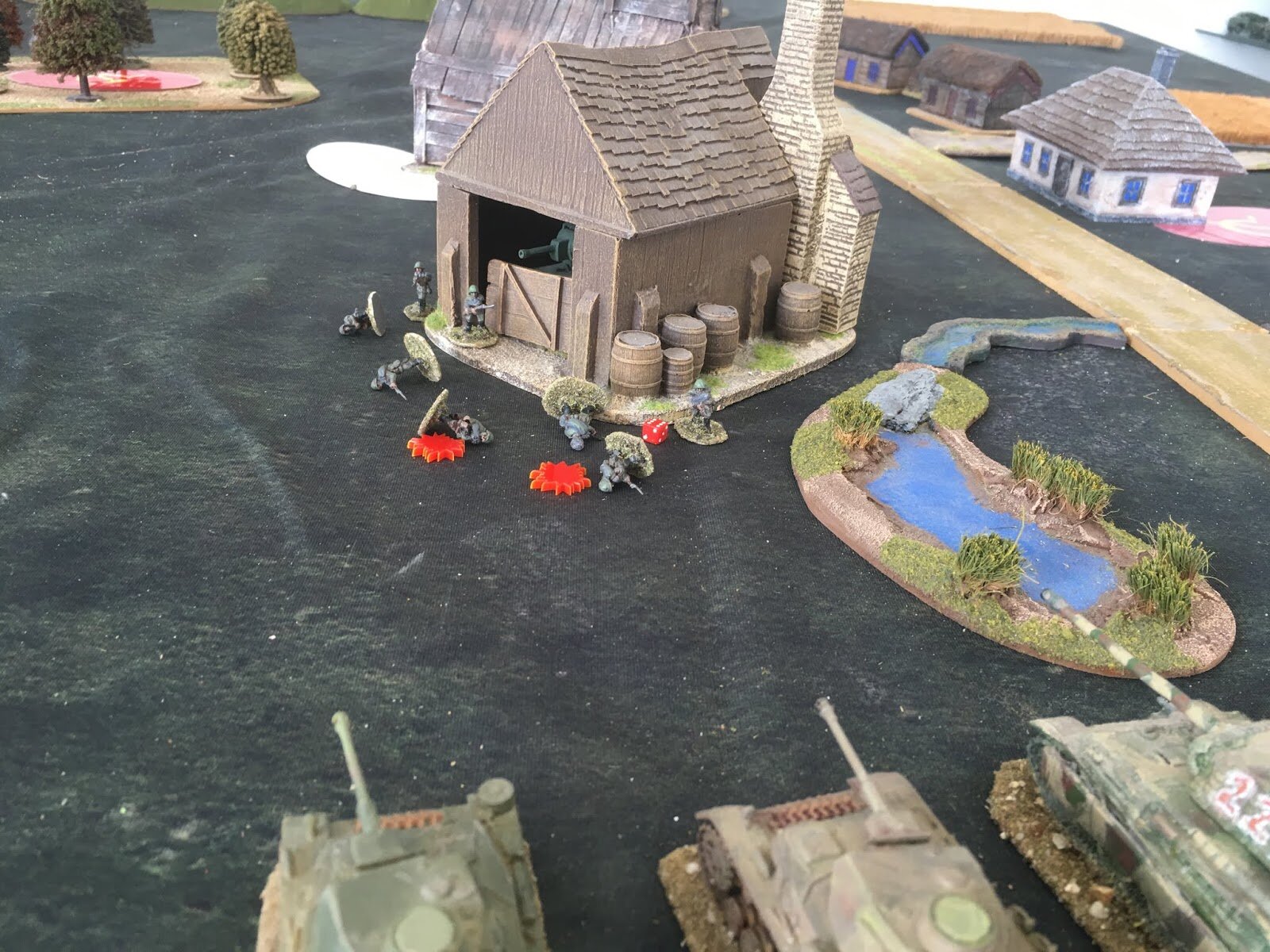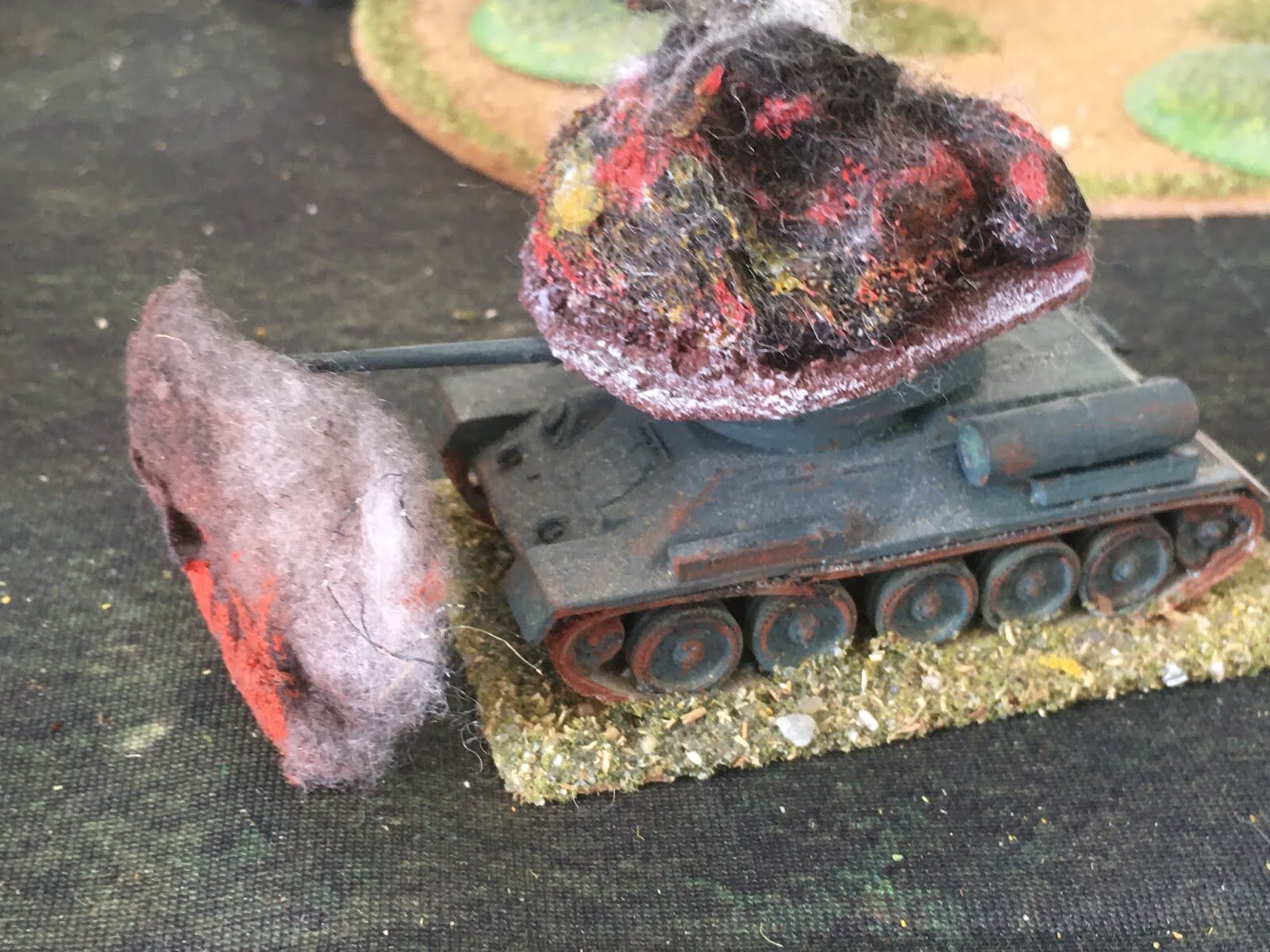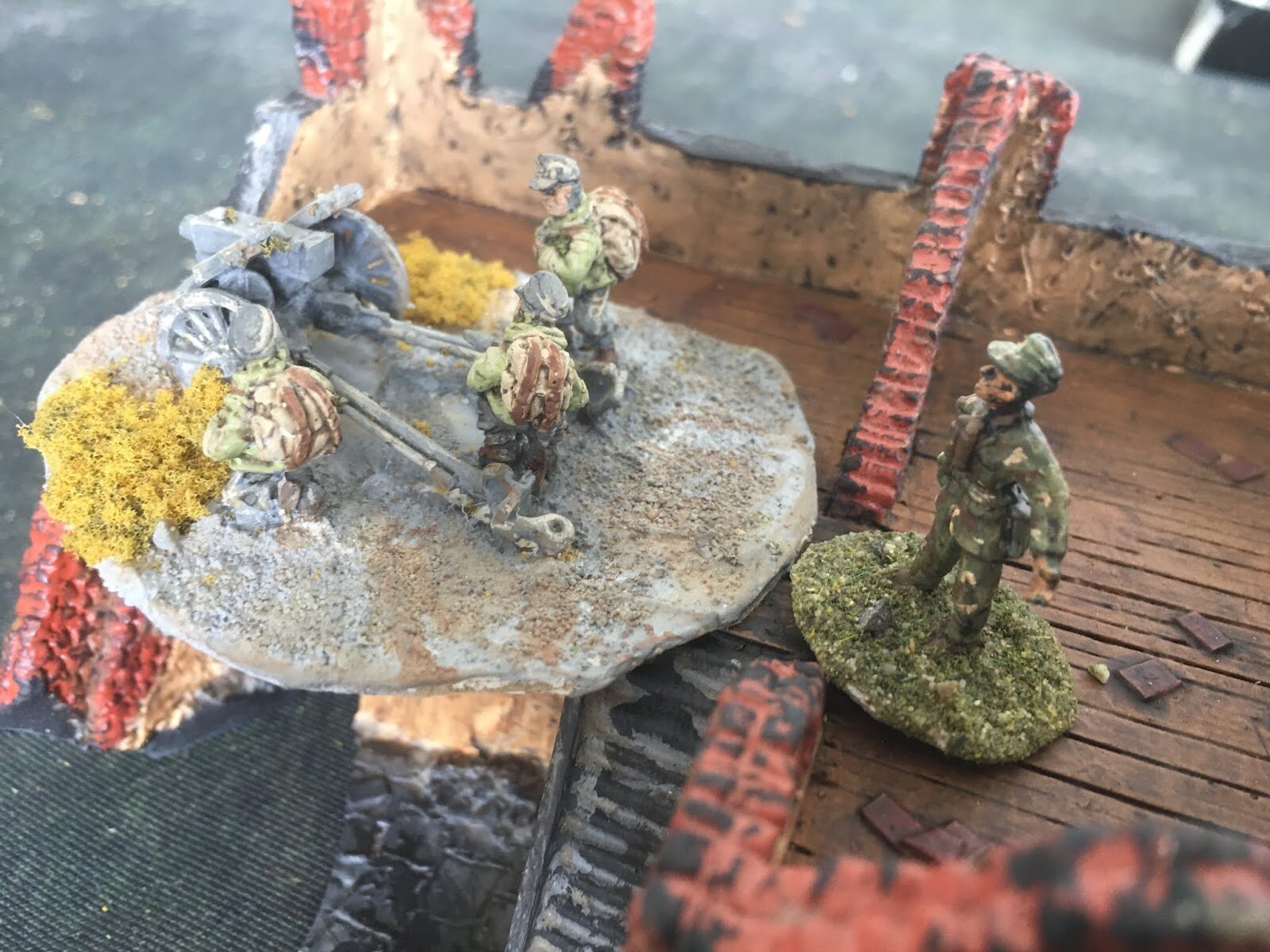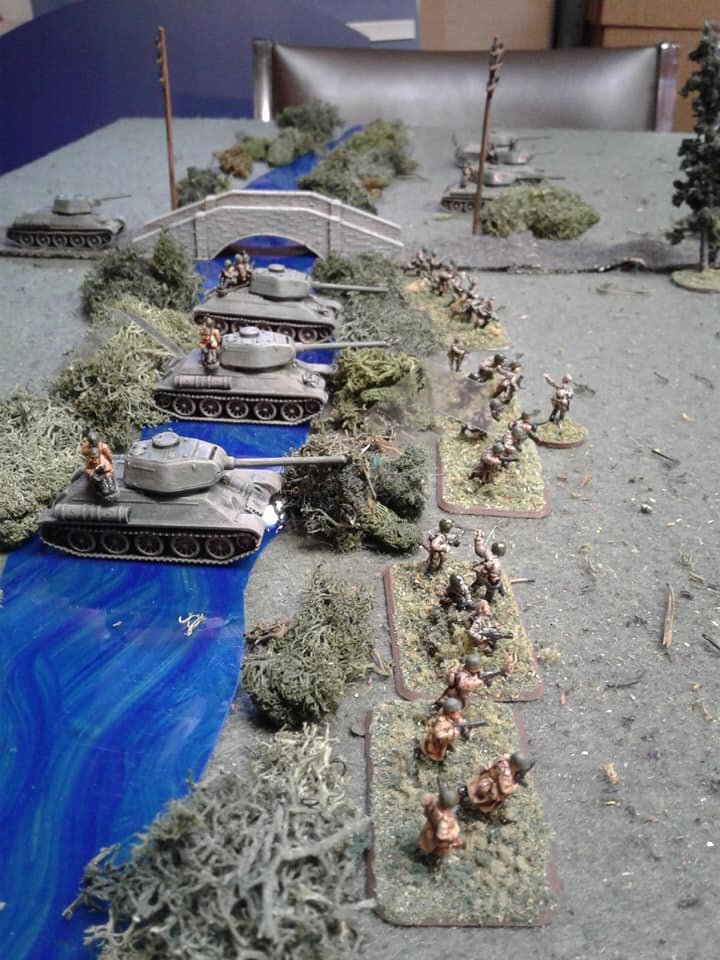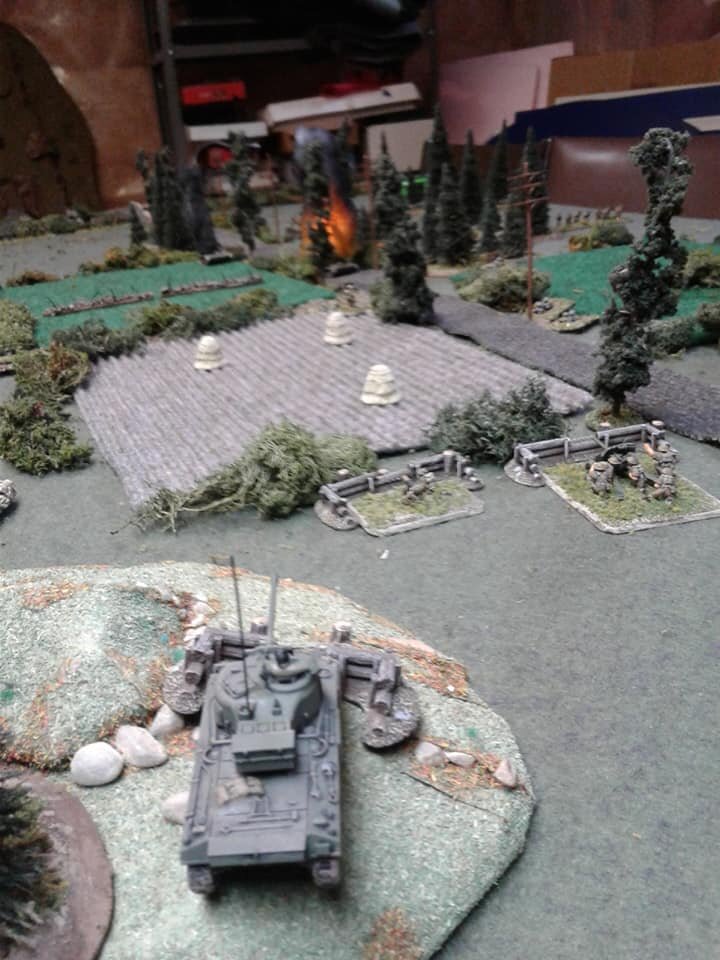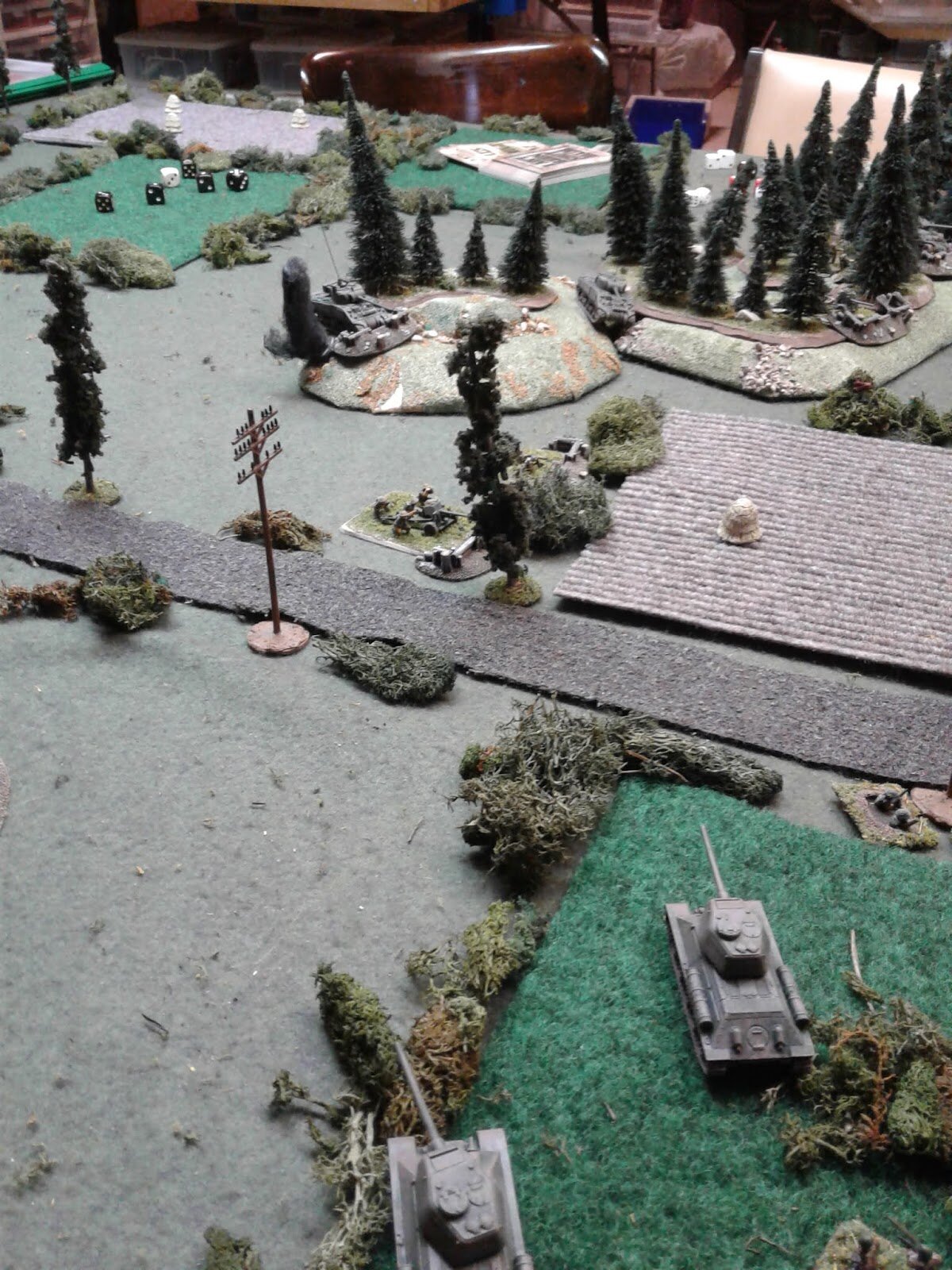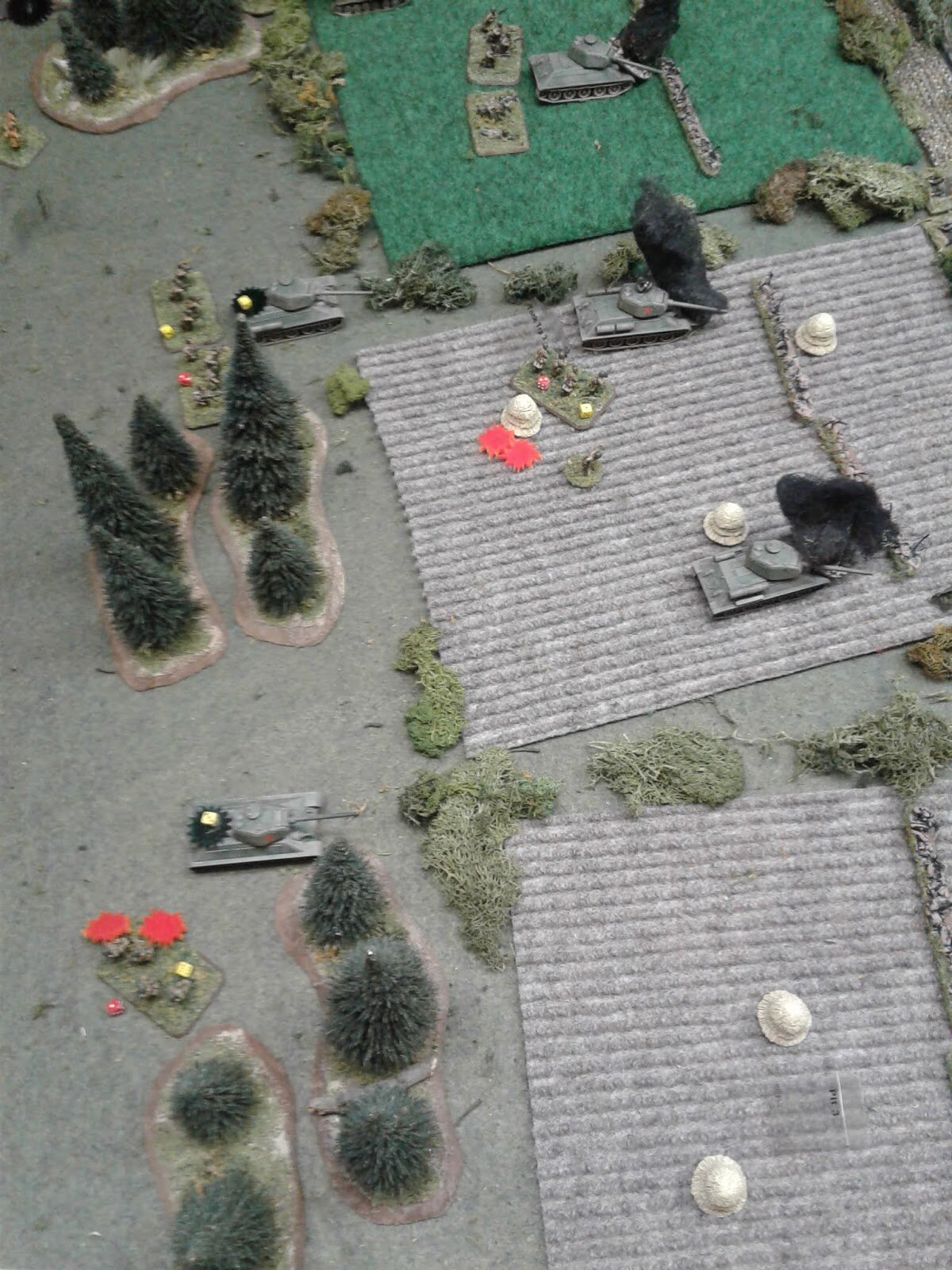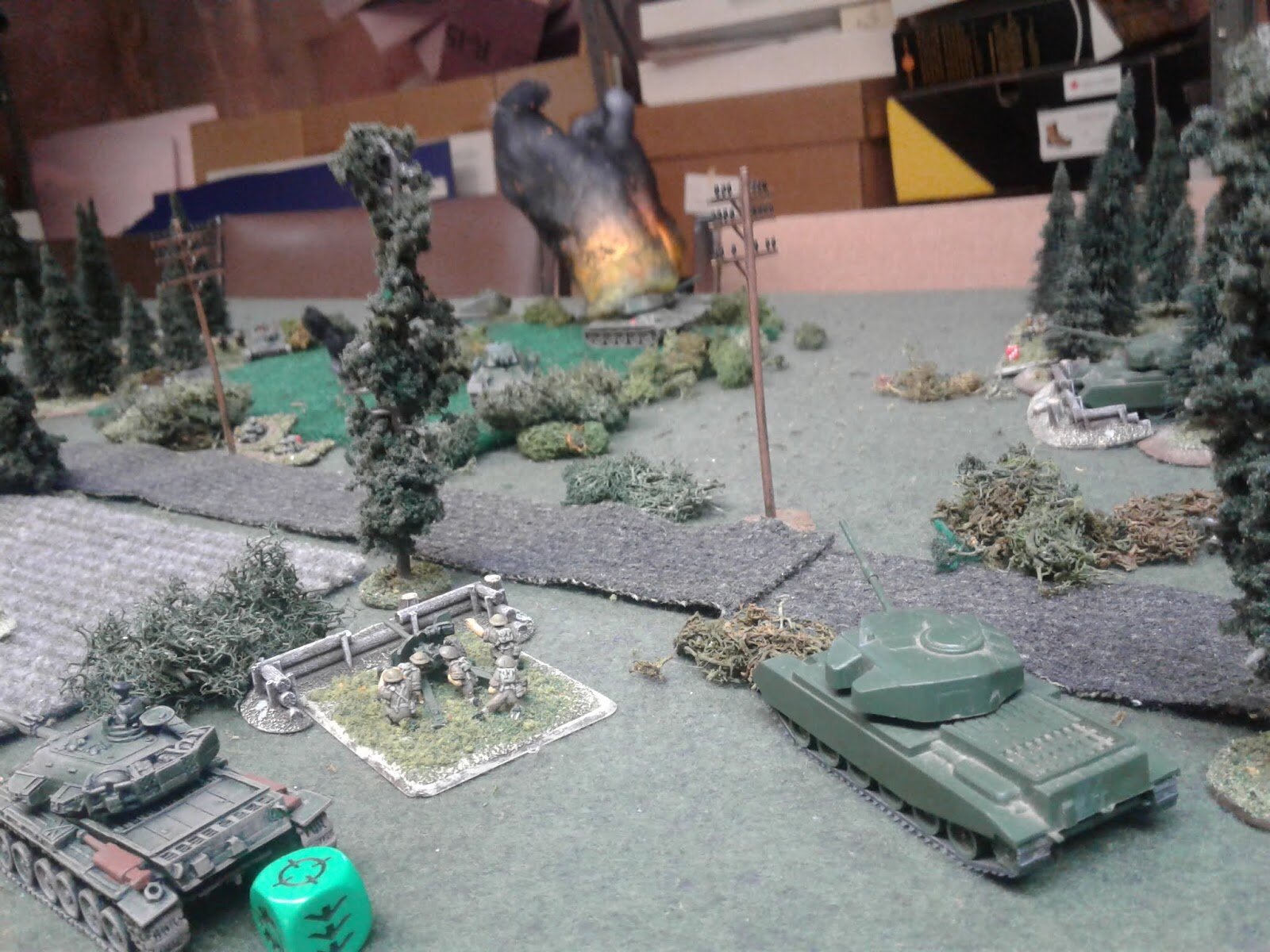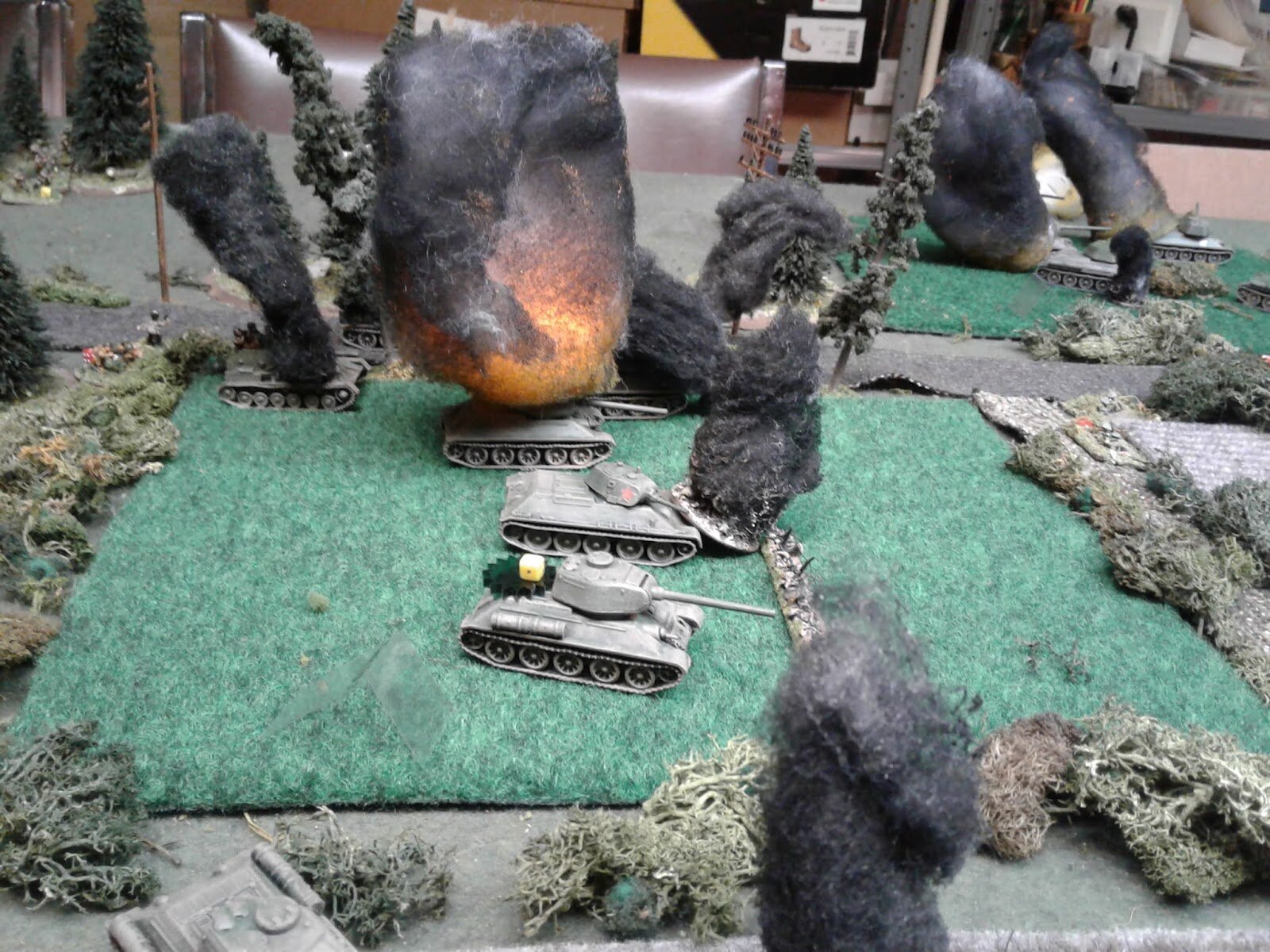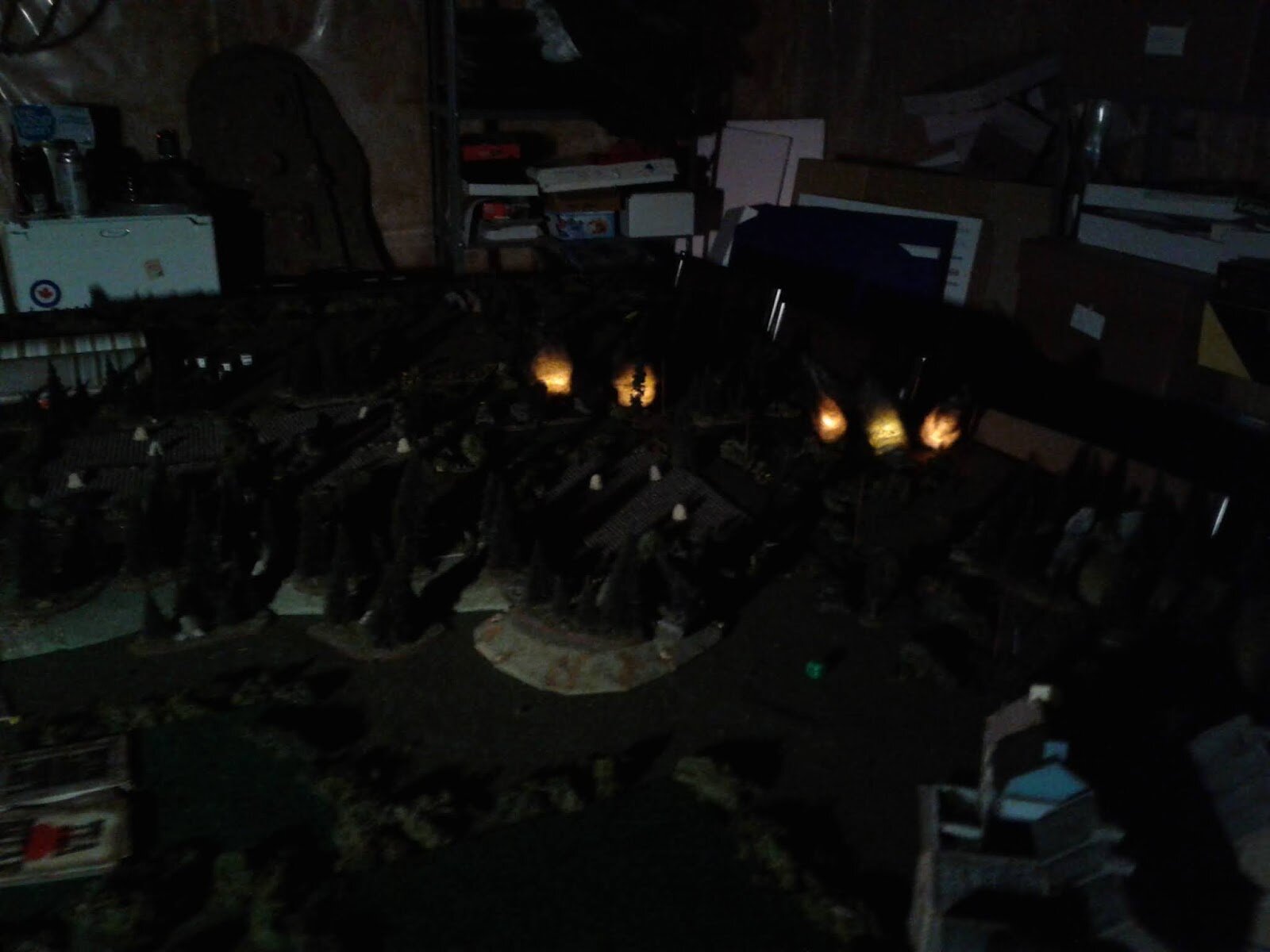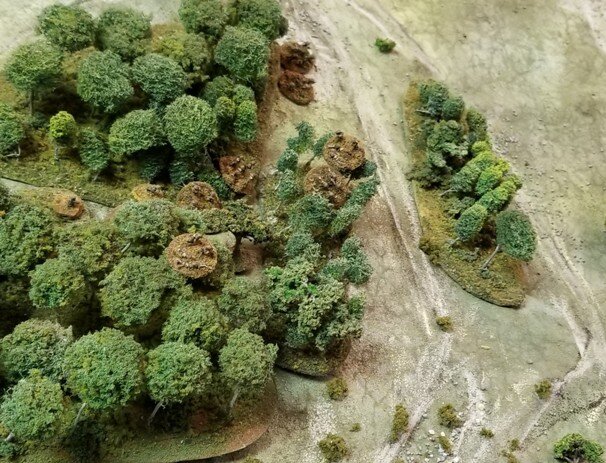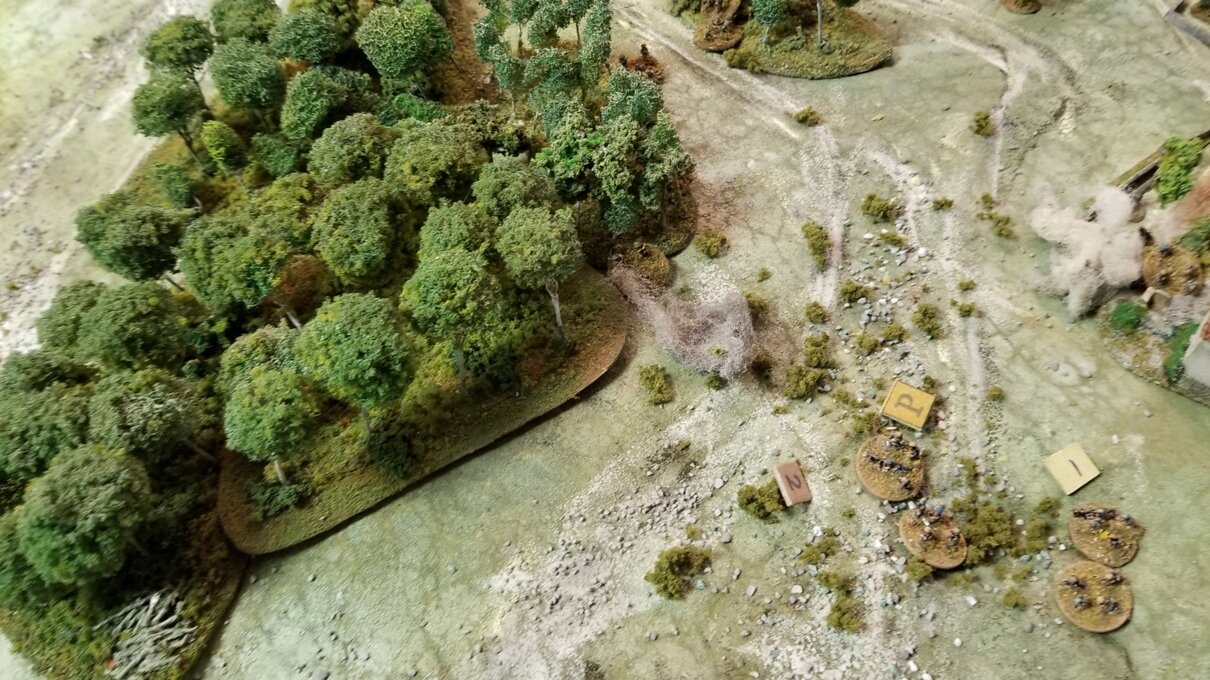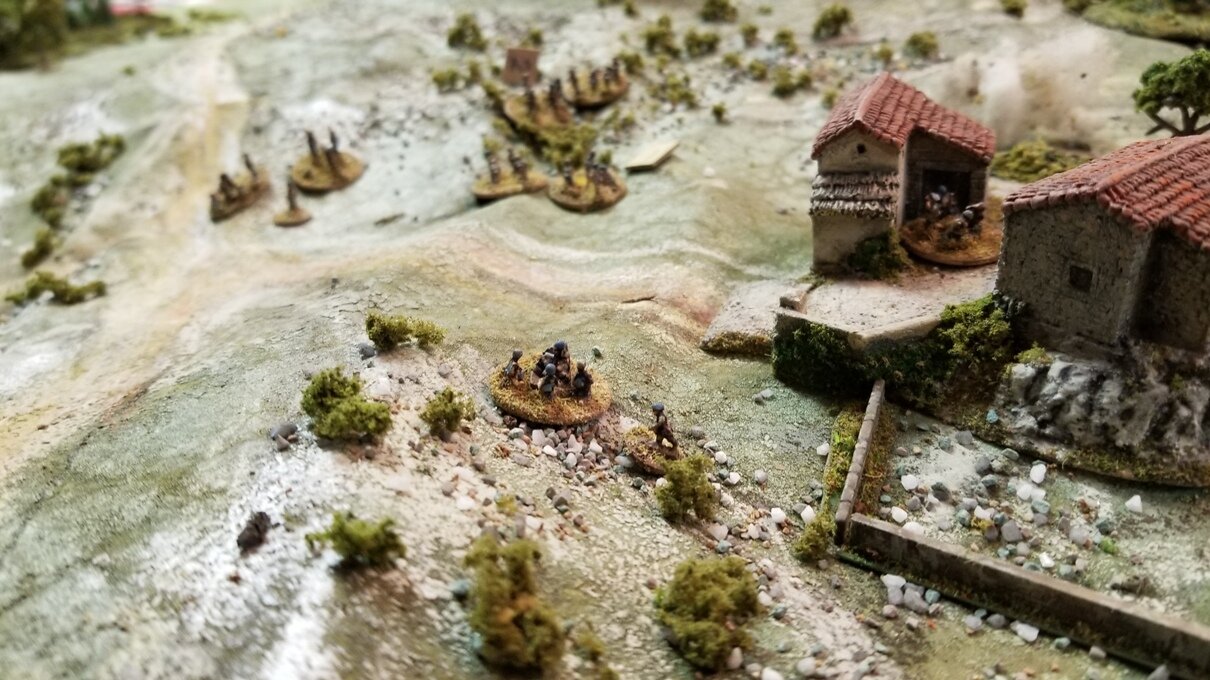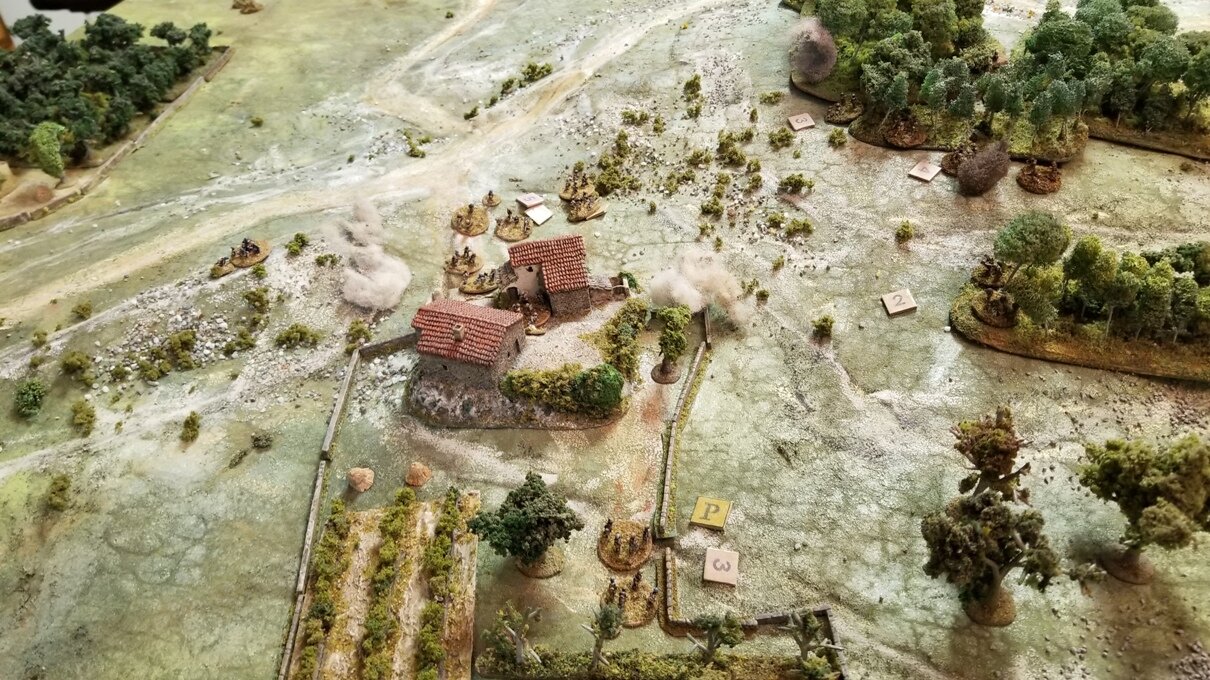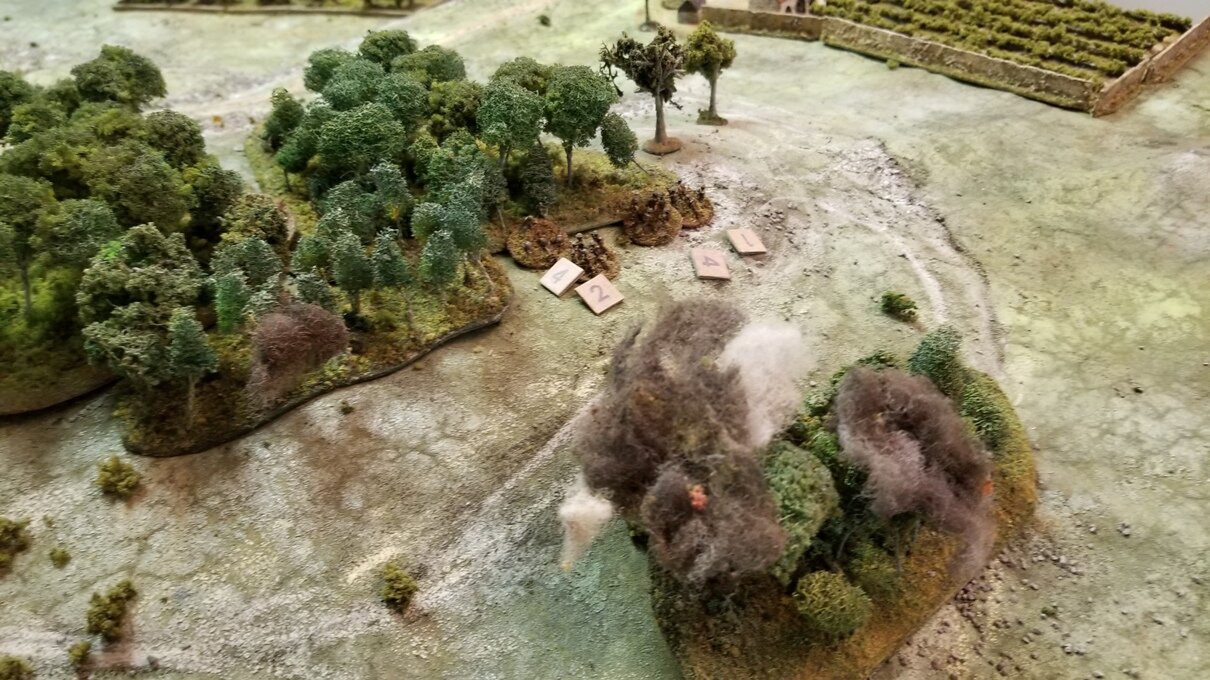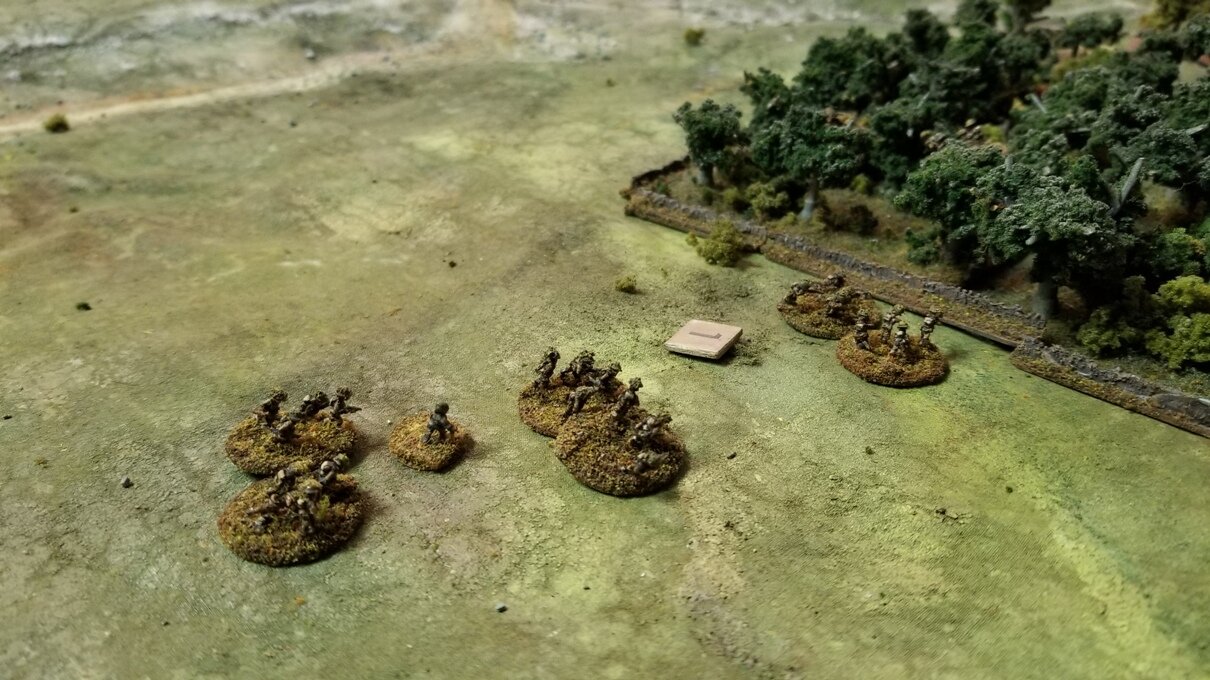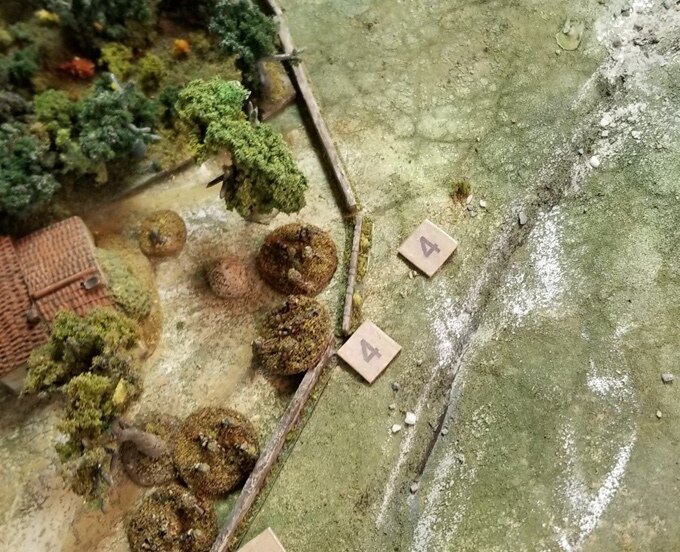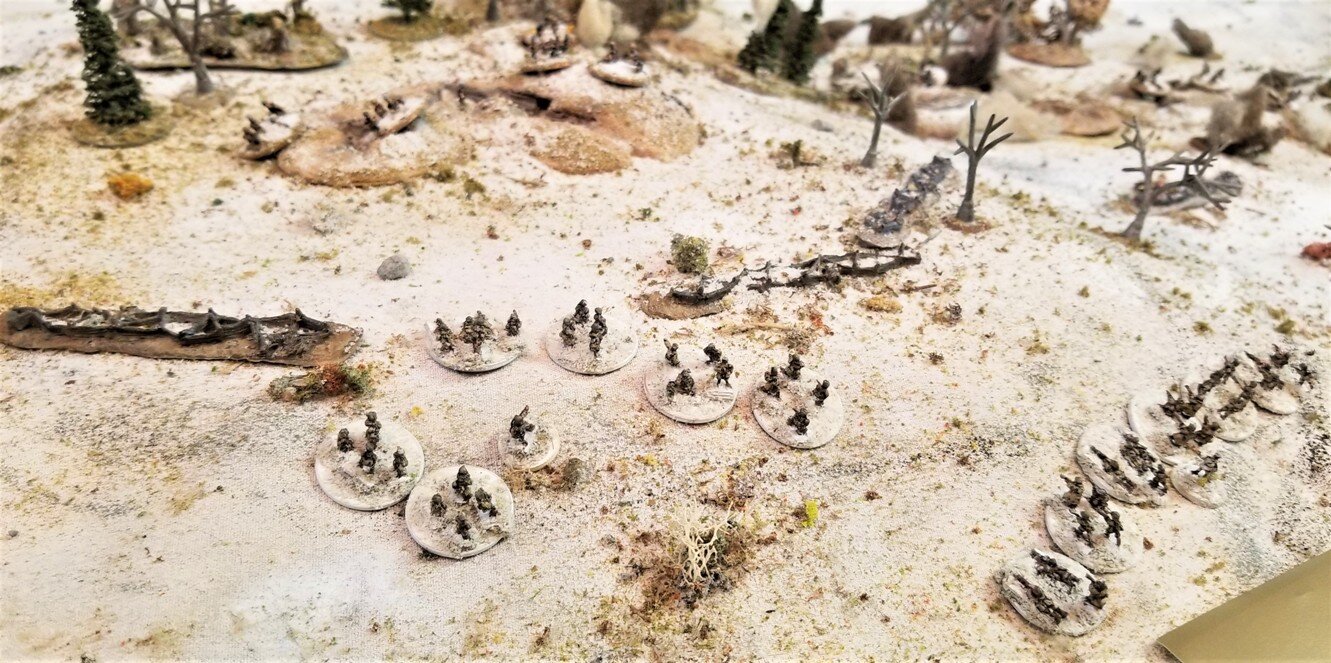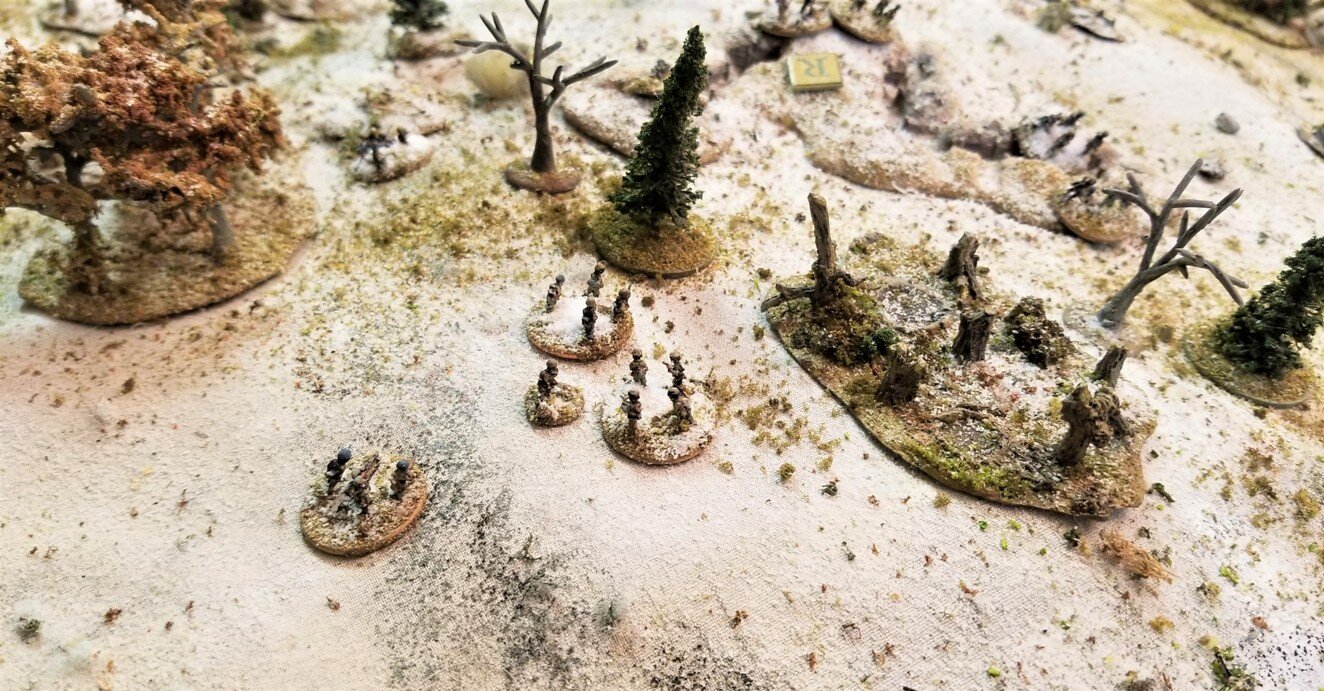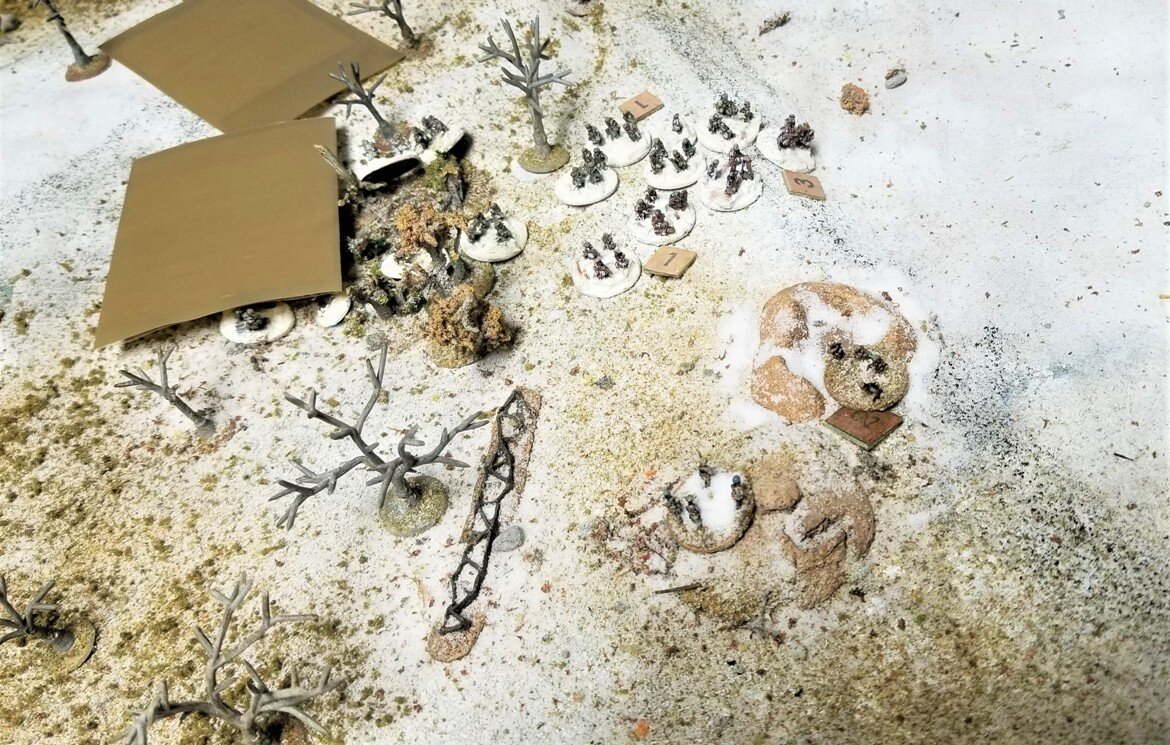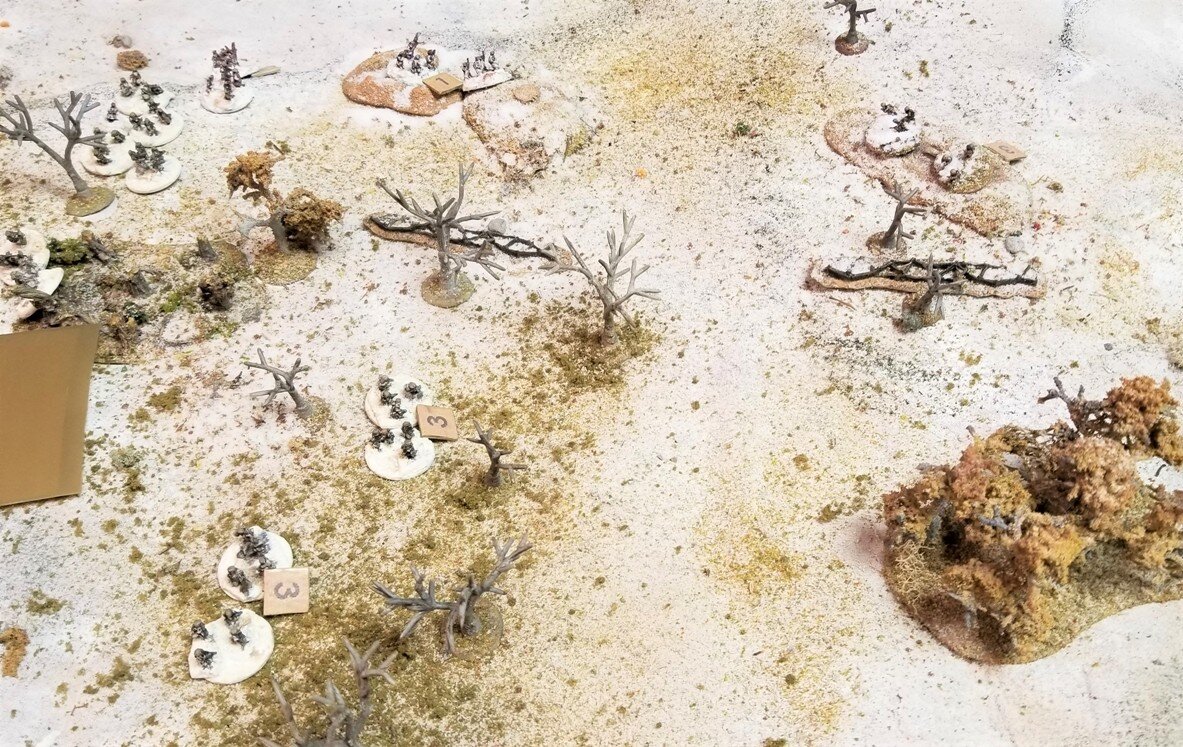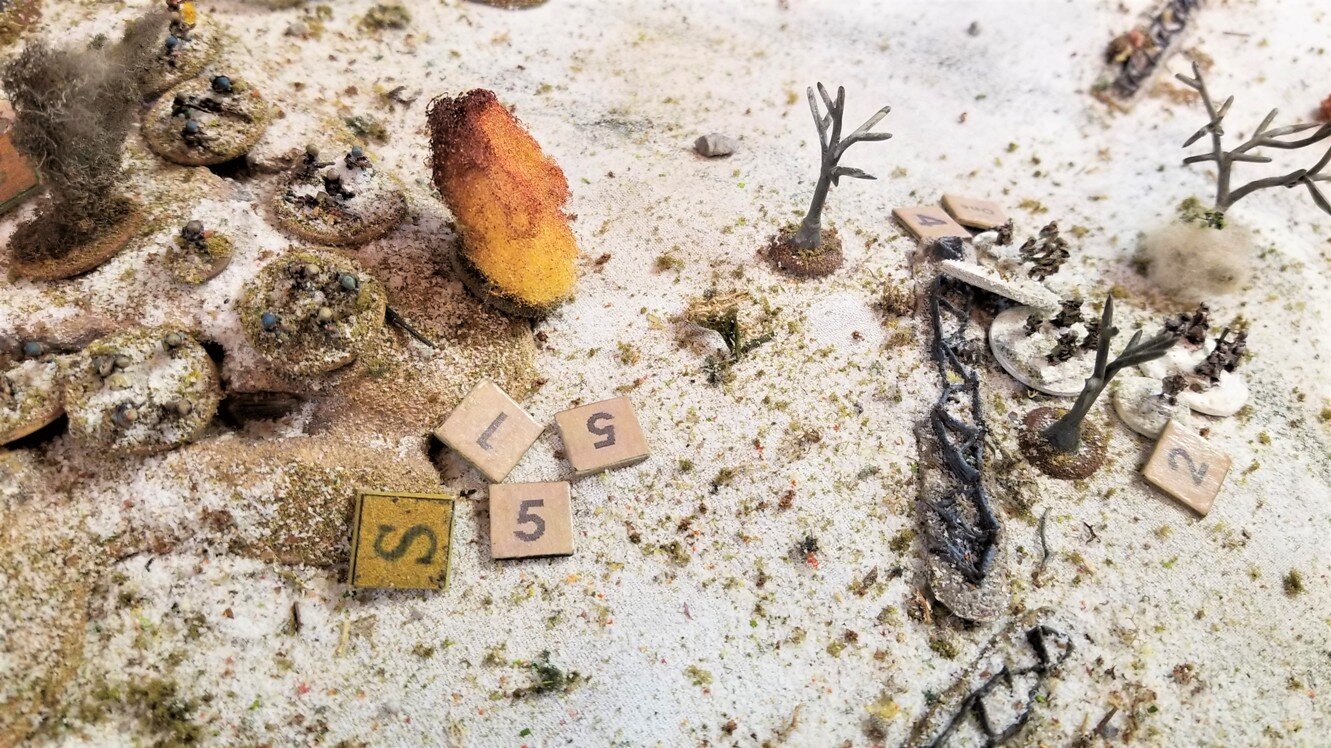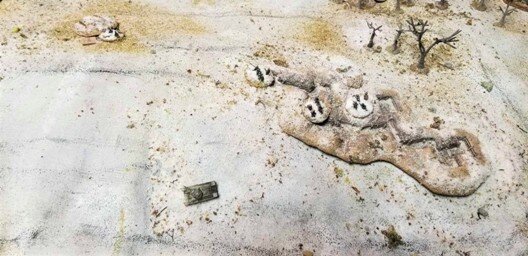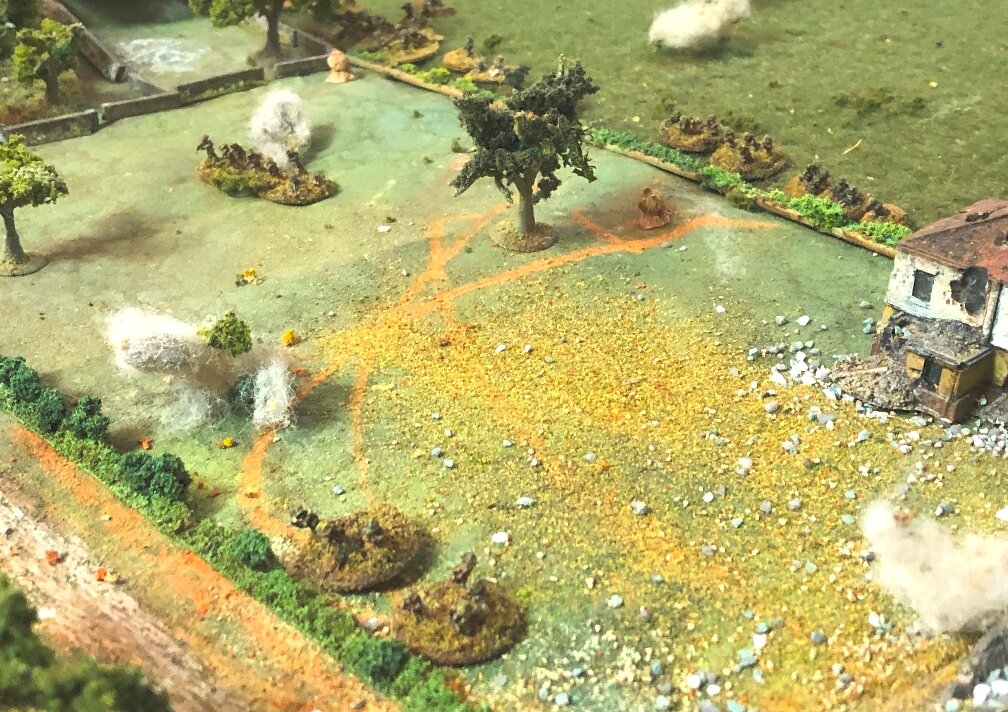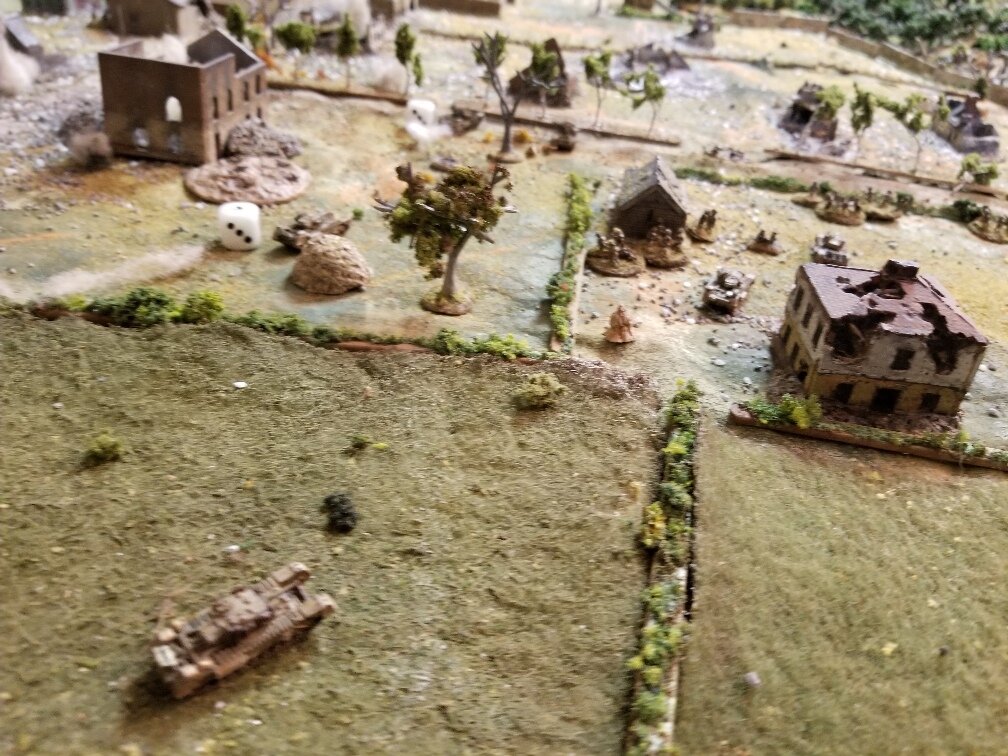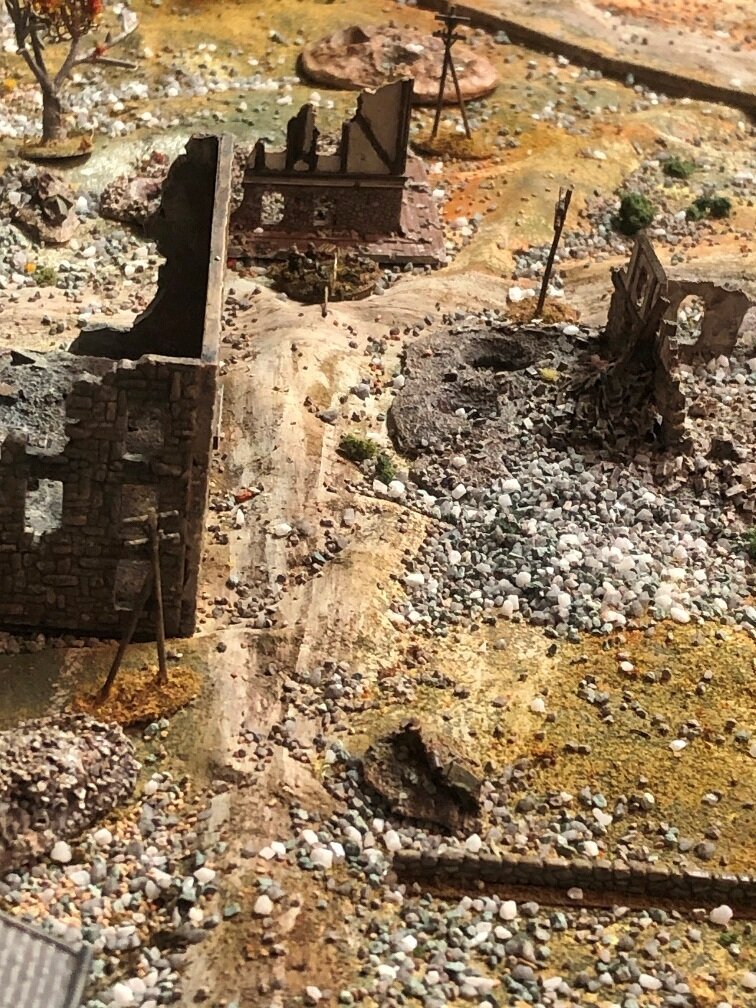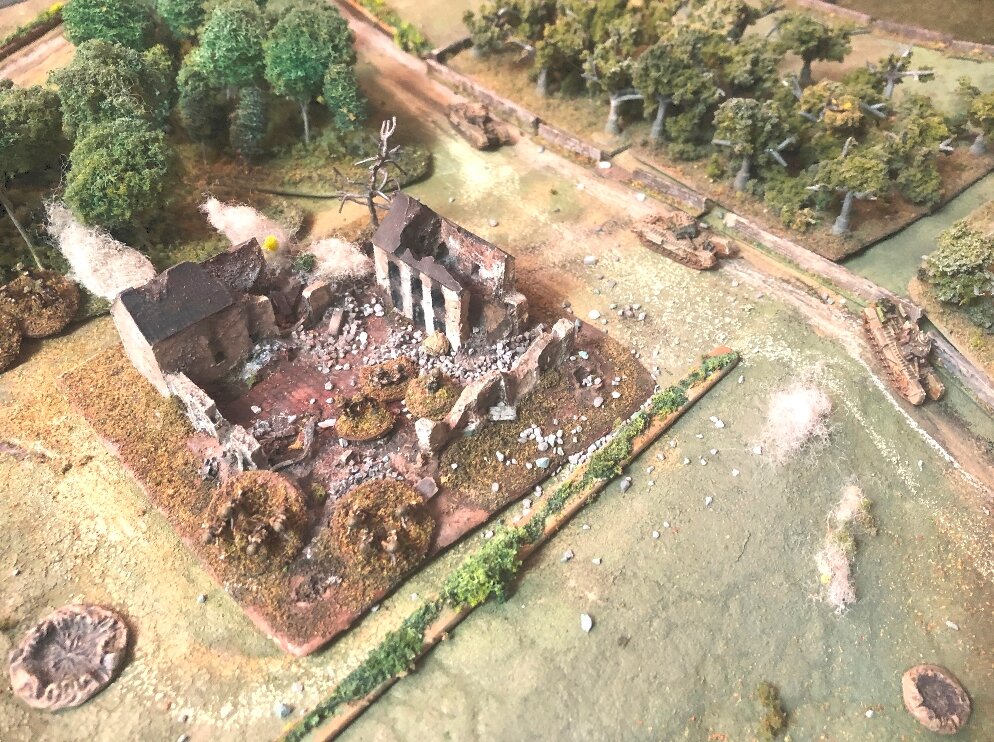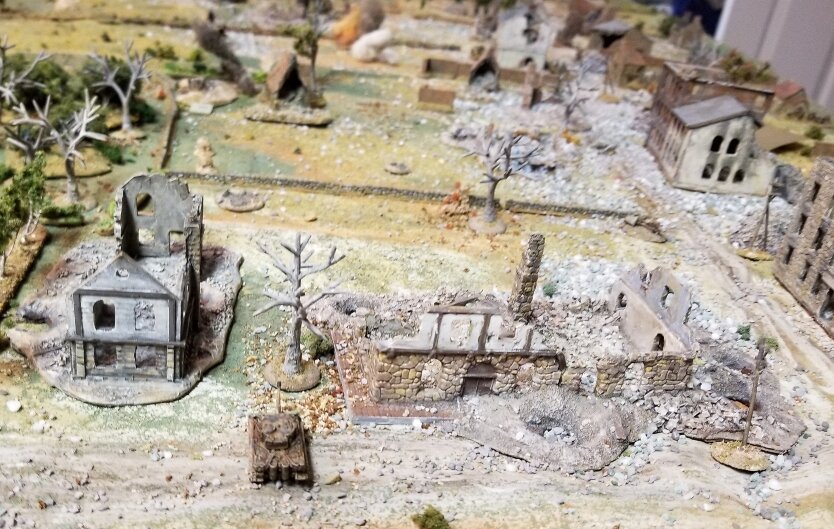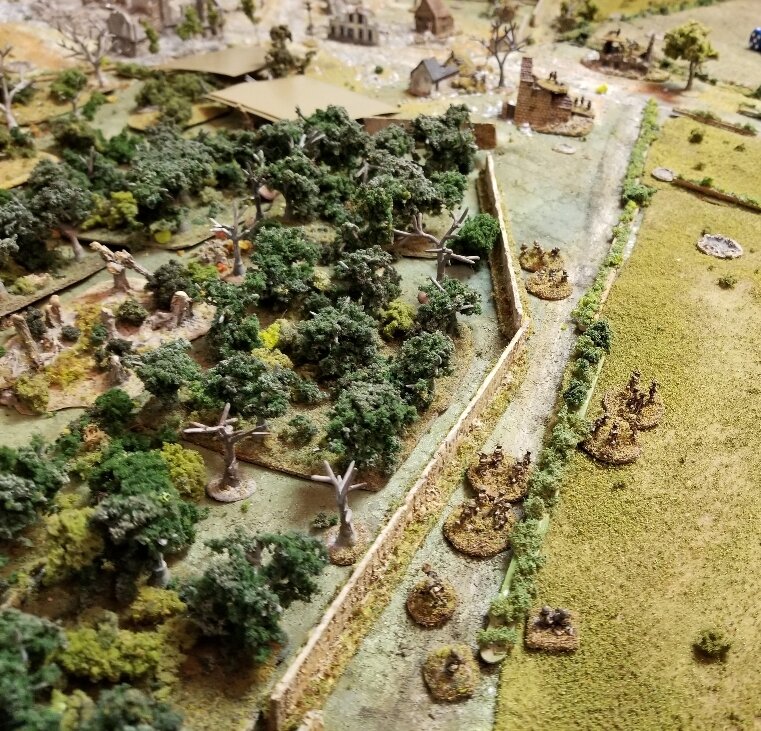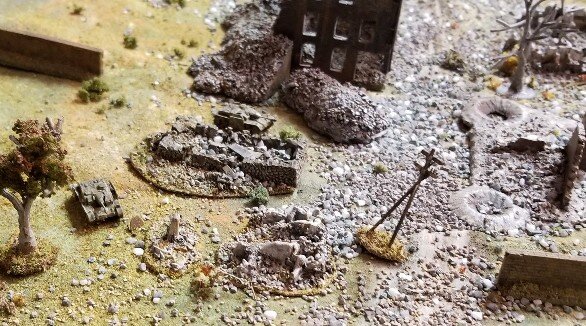Lately I've been knocking about the idea of a post-WW2 version of my Medieval and 18th century (no, I haven't painted anything for them, or you would know) Imagine-Nation, Mantovia. Mainly, I think as an excuse to field Centurion tanks, without the depressing realities of either post-Colonial Africa or the Arab-Isreali Wars. This coincided with the desire for another solo bash of I Ain't Been Shot Mum! with loads of tanks, so Saturday night I set up the table and then played this out over Sunday and Monday (which I had previously booked off), finally finishing after dinner Monday night.
Brief history
Founded by Count Raymond the Good in the 11th cent. Mantovia was one of many small states in the Holy Roman Empire. Count Ludwig was elevated to King in 1746 as a reward for leading his regiment of grenadiers in the storming of a Prussian battery at the 3rd battle of Klumpenberg. Although some court wags noted that Ludwig's fervor was perhaps the hotter because he wanted to "get this damn battle over with" so he could return to his young and beautiful bride and play for her the new concerto he had just composed.
Even after the Prussian victories of 1866, Mantovia remained loyal to the House of Hapsburg, remaining a quiet, peaceful backwater of sheep and vineyards until it's sunny days were interrupted by the clomping of jackboots in 1938. As the country was absorbed into the Greater German Reich, the tiny Mantovian army was absorbed intto the Wehrmacht as the 816th Infantry Regiment. King Raymond IX knew better than to show open defiance, but quietly instructed his police kommisar to obstruct Nazi policy as much as they could with out attracting the attentions of the feared Heydrich. When war came, the royal palace became the nucleus for a quiet resistance program rescuing allied pilots and gathering intelligence. In early May of 1945, white bedsheets festooned the windows of Mantovia, and flowers greeted Combat Command A, 45th Armored Division. King Raymond met the cigar chewing, mud spattered, hard driving Col. Wilson in his courtyard, dressed in brown tweed. "Thank God you're here. Could you please not park your tanks in my wife's roses? I've been keeping Nazis out of them for the past seven years, be a shame to lose them now. Would your men like some refreshment?"
As the settling Cold War chilled the post-War sunshine, the Mantovian armed forces were rebuilt with British equipment paid for with American money as a buffer against the Soviet threat to the east. The Soviets meanwhile were busy rearming neighbouring Borduria, Mantovia's traditional enemy to the East. "A nation of bandits and blagards!" King Amadeues the III once declared. Mantovian fathers, when disapproving of a daughter's suitor, would declare the young man "Trouble from the east" and glower. Even when both small countries were part of the German Reich, Bordurian and Mantovian troops would always brawl if found near each other, helping the Allied war effort in their own way and causing headaches for German staff officers.
It is now 1949, tensions along the border have grown since a Bordurian Commissar, drunk on slivovitz, started a skirmish with Mantovian Border Police. Sporadic shelling was met with airstrikes. Reserves have been mobilized. Foreign embassies in both capitals have been on high alert. Kampfgruppe Wahl has moved to the frontier near Isabelstadt, quickly digging slit trenches and tank positions, stringing hasty barbed wire across the beet fields.
The Game
I set up the table, made my plan and then sent my friend Scott photos of the table prior to deployment, asking him where to place the Bordurian pregame barrages. He put them pretty much where I expected, along the line of hills, which is why I held my tanks back and dug in my infantry at the foot of the hills along the country road. So I only lost one MMG to the barrage, but had to scramble to get shock off two others before the Bordurian troops arrived.












